
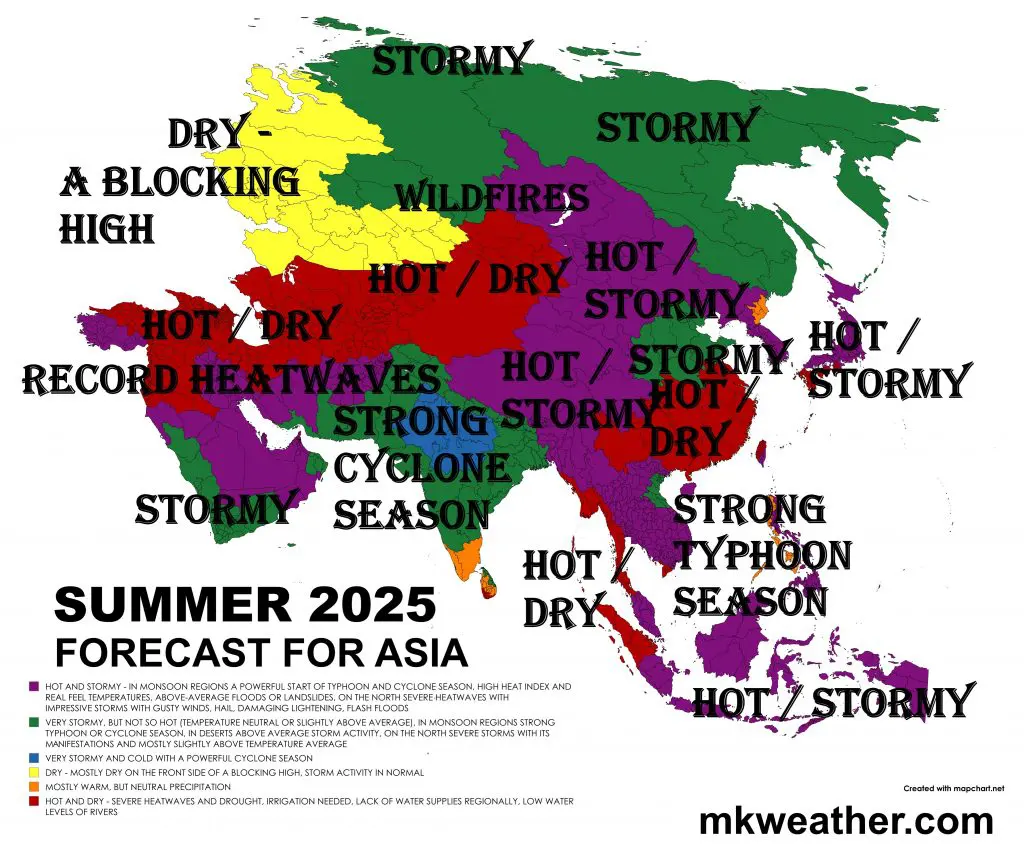
Summer 2025 is almost here, and Mkweather (mkweather.com) is bringing the first continental updates of seasonal forecasts for Europe /https://mkweather.com/summer-2025-forecast-for-europe//, North America /https://mkweather.com/summer-2025-forecast-for-north-america-and-the-usa-at-the-first-half-more-floods-at-the-second-half-peak-of-the-summer-strong-wildfire-season-on-the-west-deadly-tornado-and-hurricane-season-on-the-eas//, and Asia for Summer 2025, Africa for Winter and Summer 2025, Australia, South America, and Antarctica for Winter 2025.
This article will look at the forecast Summer 2025 conditions in Asia.
Overall, a very hot Summer 2025 is predicted for Asia, except for Northern India, with an arrival of a strong Cyclone season. While Central Asia, Northern Middle East, Southern China, Myanmar coast and Java, such as Western Siberia will be mostly dry, other regions will be hit be a powerful Typhoon or Cyclone season or severe storms – strong storms and a high heat index is forecast mainly in SE Asia, such as India (where will be colder), southernmost Middle East, northern China, Korea, Japan, Tonkin Bay, parts of Mongolia, Central and Eastern Siberia or western and southern Turkey.
While parts of SE Asia, especially Indonesia, and parts of India should see 200% of precipitation long-term average, parts of Central Asia should see only 20% of all-time average for summer months.
Strong Typhoon 2025 season and Cyclone 2025 season in the western Pacific and northern Indian Ocean will be linked with the coming La Nina, IOD- and PDO- phases. Severe rainfall and storms are predicted during Summer 2025 as the start of the Typhoon 2025 season in Indonesia, southern and eastern Philippines, Malaysia, Brunei, parts of Thailand, Vietnam, Myanmar (except for the coast), Cambodia, and Laos, too in northern and continental China, Koreas, and Japan – these region however will report less typhoon activity such as southern regions. Drier will be only Java, Indonesia, northern, and western Philippines, the coast of Myanmar, and SE China. Cyclone season will be powerful in India, Pakistan, Bangladesh, even coast of Iran, easternmost Oman, Yemen and western coast of Saudi Arabia should be anomalously stormy, with some cyclones from Indian Ocean.
Hot air from the Sahara will be often shifting above the Northern Middle East, the Caucasian region, Turkey, Central Asia, Mongolia, Tibet, and the Baikal region, Siberia. The next historic heatwaves and exhausting drought are possible after April´s +48,9°C in Kuwait and +43,3°C in Turkmenistan, and up to +40°C in Kazakhstan, with mid-spring temperatures 10°C above all-time monthly temperature records.
Meanwhile, above European Russia and Western Siberia, a blocking high will be bringing heatwaves and drought on its back side, mostly in Eastern Europe, the Baltic region, and Finland, as well as Black Sea region, while on its front side will be flowing colder, but still very dry air to westernmost parts of Asian Siberia and northern Kazakhstan.
Due to drought, storms in northern and eastern Siberia, and severe heatwaves in the Baikal region, a severe wildfire season in Siberia is expected. Already in early May 2025, 87% of the Zabaikalski region is engulfed by smoke from wildfires.
Not only La Nina and IOD- will bring a serious rainfall in southern and eastern parts of the continent during Typhoon and Cyclone 2025 seasons, but expected AO- and NAO- should support storms across Siberia, Mongolia, China, Koreas and Japan, together with melting Arctic and escaping moisture from the Artic southward.
In late summer, some weaker remnants of ex-hurricanes should affect W/NW Asia.
QBO shift from Westerlies to Easterlies will support AO-/NAO- and Atmospheric blocking. AMO+, and PNA- should have some regional impacts.
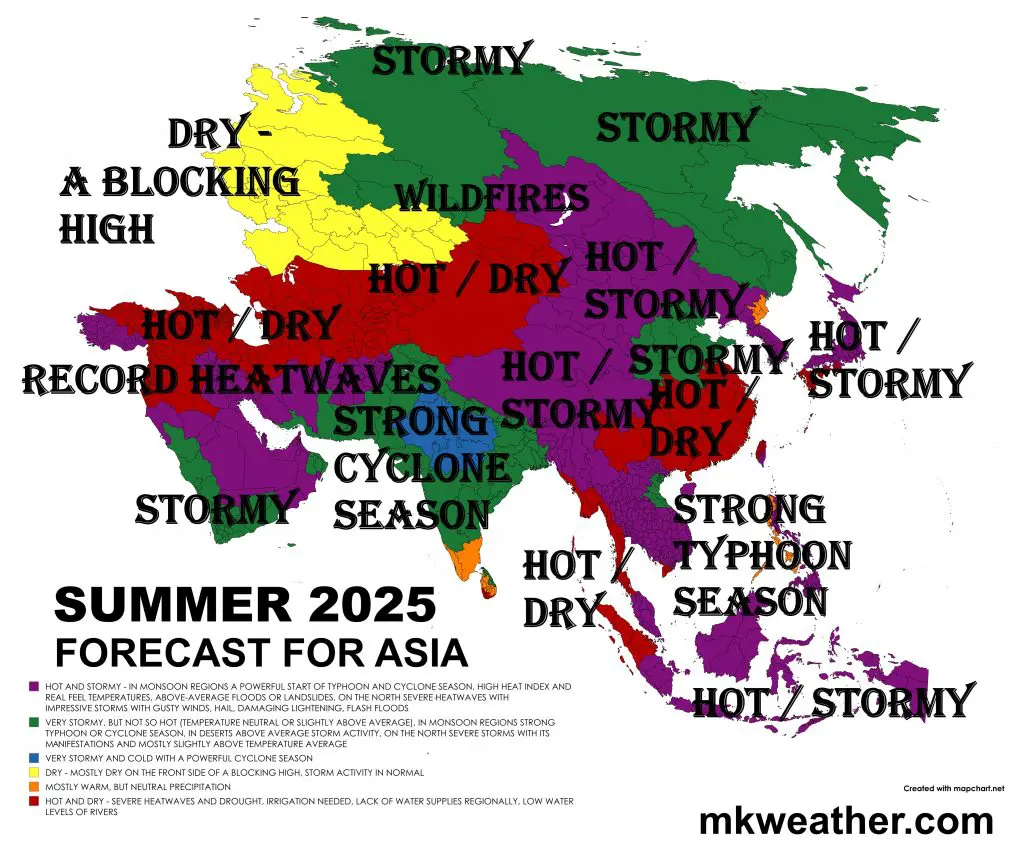
A few main factors will be affecting conditions during the upcoming Summer 2025:
1. Sun cycle
Surprisingly strong solar activity during the peak of the current 25th solar cycle in the last years was associated with a strong phase of La Nina in its coming phase, it means from spring 2020 to spring 2023 (together 3 years of La-Nina driven climate anomalies around the Earth) and a short, but strong El-Nino in its peaking phase from Spring 2023 to Summer 2024. Now we are again in La Nina phase, but relatively weak La Nina, with a decrease of sunspots and geomagnetic storms, it means yearly lower chances for NAO+, mainly in the winter. In the Little Ice Age, a weak Sun activity produced Godzilla El-Ninos and strong AO- and NAO- patterns across the Northern Hemisphere with a result in hunger, bad harvests, diseases, fear, and finally, an inquisition. A peak of the strong solar activity was observed between 1950 – 2000, and from then, activity was decreasing, however, the last cycle was observed surprising increase of the Sun activity, with surprising events in the first half of 2024.
From 21. to 22. February 2024 there was a big chance, that the Sun produced the strognest Triple-eruption in 24-hours In the last 30 years, maybe since 1900, maybe since pre-Middle age times (Middle ages hadn´t strong Sun stroms). There have been 3 Triple-eruptions in the last 20 years:
2013: weaker intensity 5/13/2013 2:17 N11E89 X1.75/13/2013 16:01 N11E85 X2.85/14/2013 1:11 N08E77 X3.2.
2014: weaker intensity 6/10/2014 11:44 6/10/2014 11:42 S15E80 X2.26/10/2014 13:03 6/10/2014 12:52 S17E82 X1.56/11/2014 9:10 6/11/2014 9:06 S18E65 X1.0.
2017: main eruption stronger, but 24-hour criterion not met9/6/2017 9:17 9/6/2017 9:10 S08W32 X2.29/6/2017 12:10 9/6/2017 12:02 S09W34 X9.39/7/2017 14:55 9/7/2017 14:36 S11W49 X1.3.
Year 2003 brought 2 giant eruptions, but again only 2 in 24 hours and not 3, does not meet criteria (https://sos.noaa.gov/catalog/datasets/sun-historical-solar-flare-2003/).
Previously the solar cycle peaked between 1989-1992: “The next 14 days produced 11 “X class” flares” March 1989: The largest geomagnetic storm in the 20th century: (https://agupubs.onlinelibrary.wiley.com/…/2019SW002278).
But even the strongest storm in 100 years did not produce 3 X ray bursts in 24 hours: (https://agupubs.onlinelibrary.wiley.com/…/swe20919-fig).
Stronger solar cycles occurred 3 more times from the 1950s to the 1970s, but we don’t know if there was a triple burst. If not, it may be the strongest triple burst since before the Middle Ages, when solar activity was at a strong minimum. Database: https://xrt.cfa.harvard.edu/flare_catalog/all_full.html.
The strongest geomagnetic storm in 21. century? The strongest since 1960 and the second strongest in 100 years? According to estimates of the daily Ap index for 11.5.2024, Ap 274 was measured (note: current Spaceweather data contains a number 271), which should be the second strongest X-ray attack on our bodies in 24 hours in almost 100 years (since 1932) (in modern history)! Stronger was only 1960 with Ap 280. If we overcame single days in the years 1989 and 2003, it will be the strongest geomagnetic storm since 1960 (in 64 years), which is a once-in-a-lifetime event. Moreover, weakening of solar cycles in 21. century is mostly expected, which should mean that this should be the strongest geomagnetic storm in 21. century! https://www.spaceweatherlive.com/…/top-50-geomagnetic…https://www.spaceweather.gov/…/aurora-dashboard….
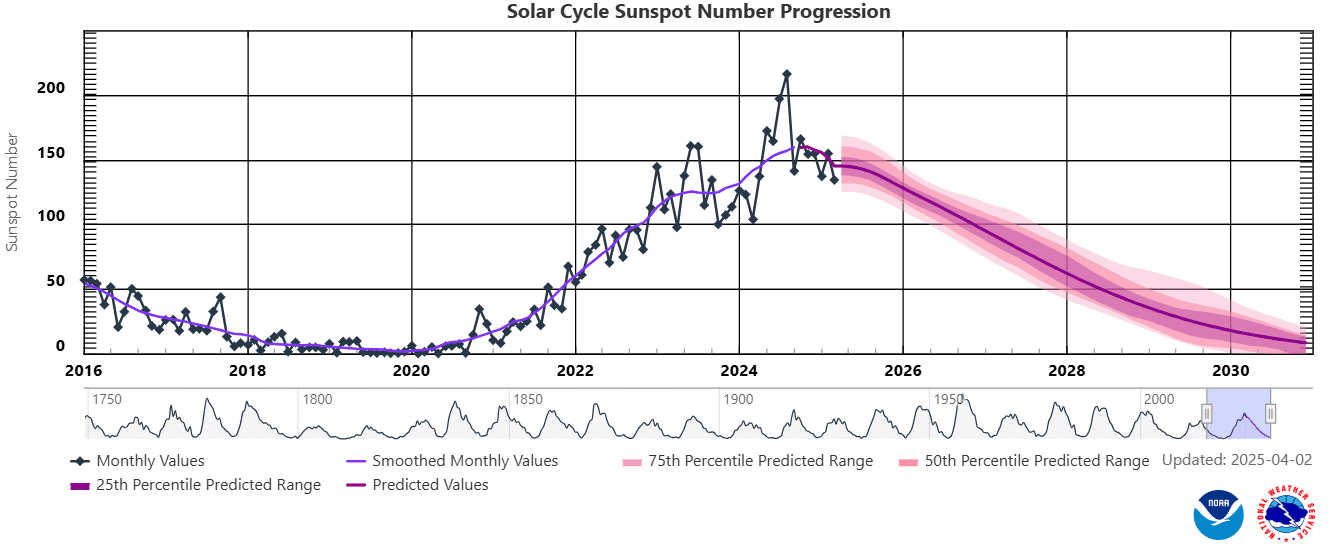
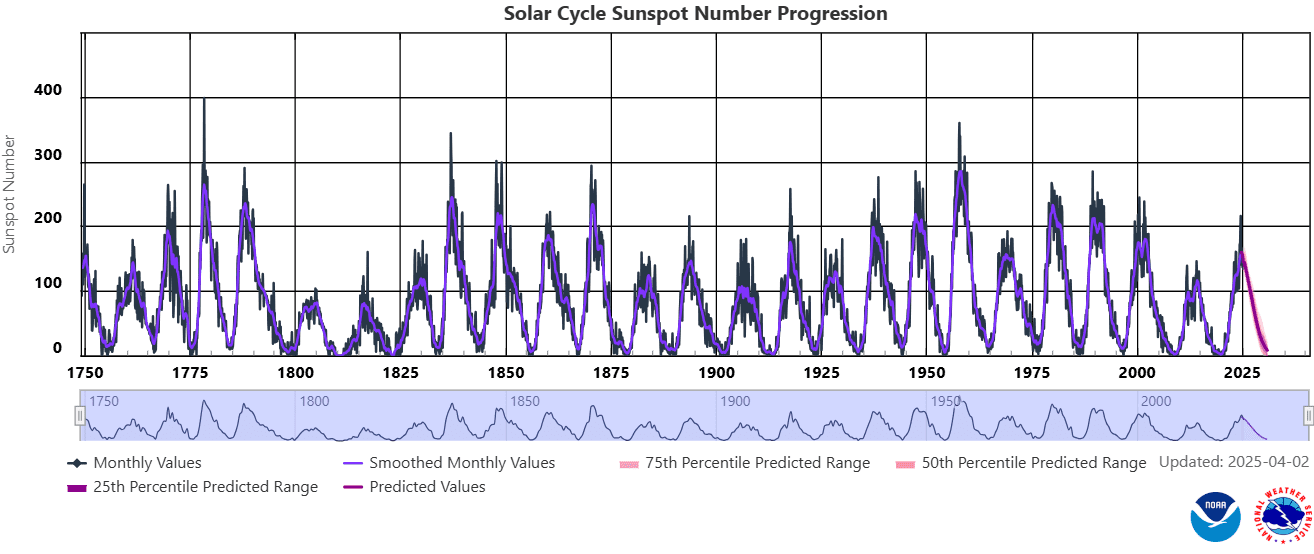

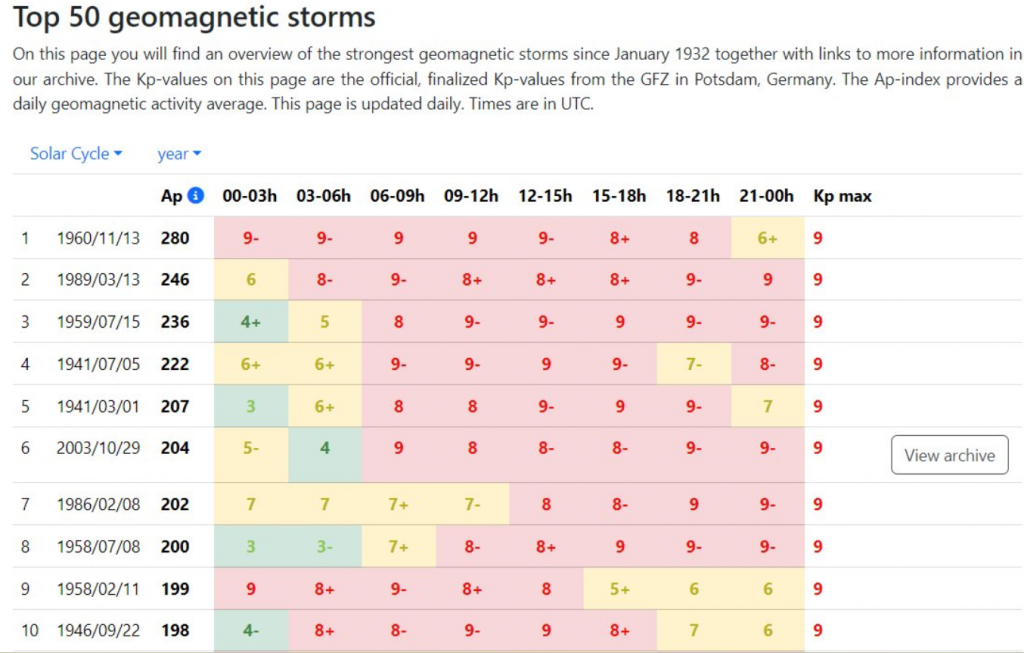
The strongest 24-hour geomagnetic storms until 11. May 2024 (placed in second place) /Source: spaceweather.com
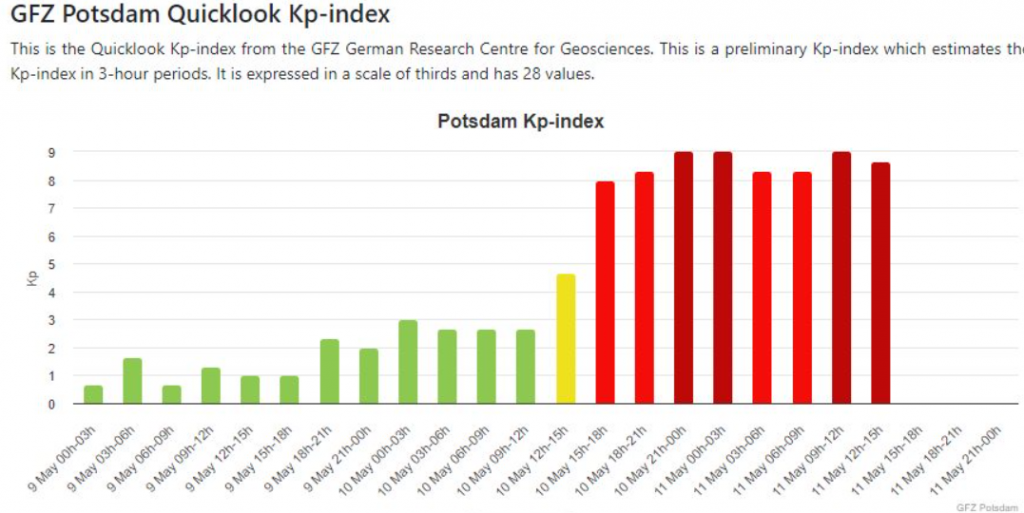
Source: https://kp.gfz.de/en/hp30-hp60
2. Probable strengthening La Nina
During Summer 2025 a shift from neutral phase to weaker La Nina pattern is possible.
Upcoming La Nina should have impact on growing season – a strong La Nina is associated with very stormy SE Asia and fertile Eurasian steppe, such as wider Kerala region, India, while northern India and many parts of China, such as south-Central Asia should be hot and dry.
La Nina (although weaker) in the second half of Summer 2025 should mean a stronger Typhoon and Cyclone 2025 season and Atlantic Hurricane season 2025.
While SE Asia should report relatively live Typhoon 2025 season, in China, Koreas and Japan it is predicted to be weaker – our estimates are above this article: /https://www.guycarp.com/content/dam/guycarp-rebrand/insights-images/2025/05/05_07_2025_Tropical_Cyclone_Predictions_2columns_publish.pdf/.
Overall, La Nina is linked more with NAO+, however, it will be weaker – it means that typical NAO- character of summers in the last 20 years (only 6 summers since 2006 ended like NAO+) still should be preserved.

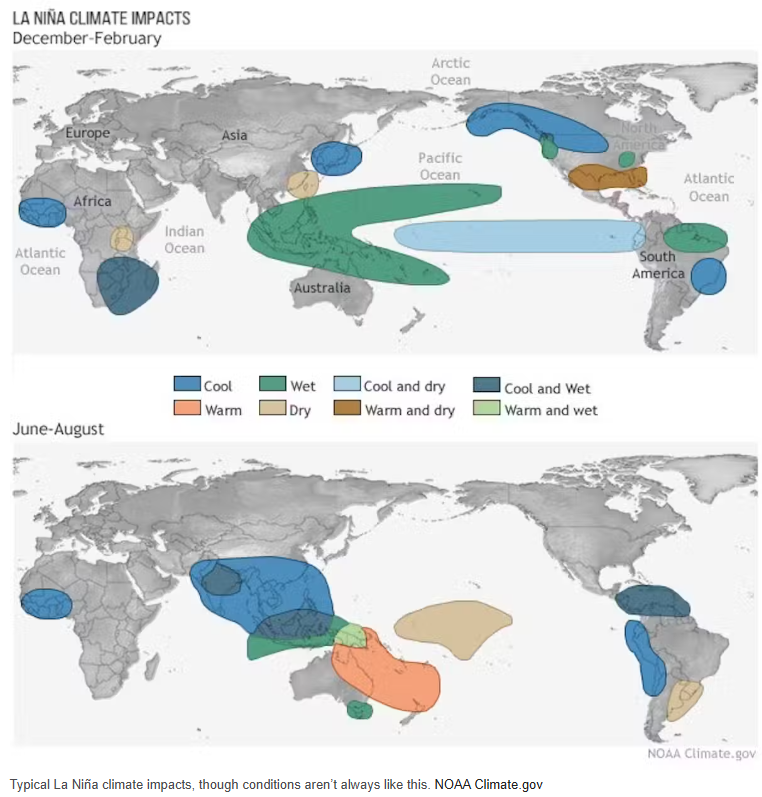
La Nina weather patterns across the world in winter and summer months. Source: https://theconversation.com/la-nina-is-coming-raising-the-chances-of-a-dangerous-atlantic-hurricane-season-an-atmospheric-scientist-explains-this-climate-phenomenon-228595
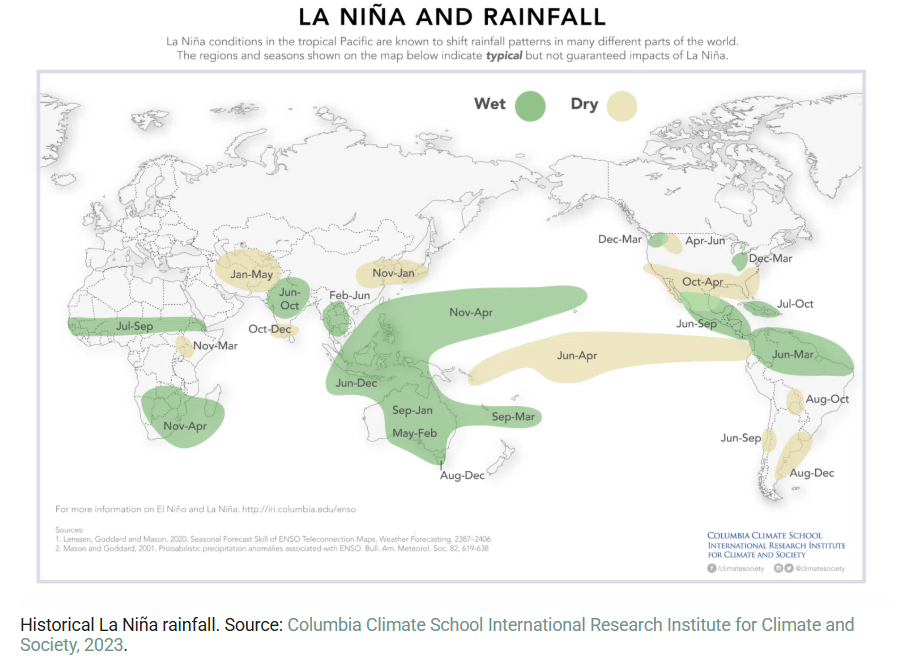
Rainfall timing of La Nina. Source: https://www.climateimpactstracker.com/la-nina-winter-weather-forecast/
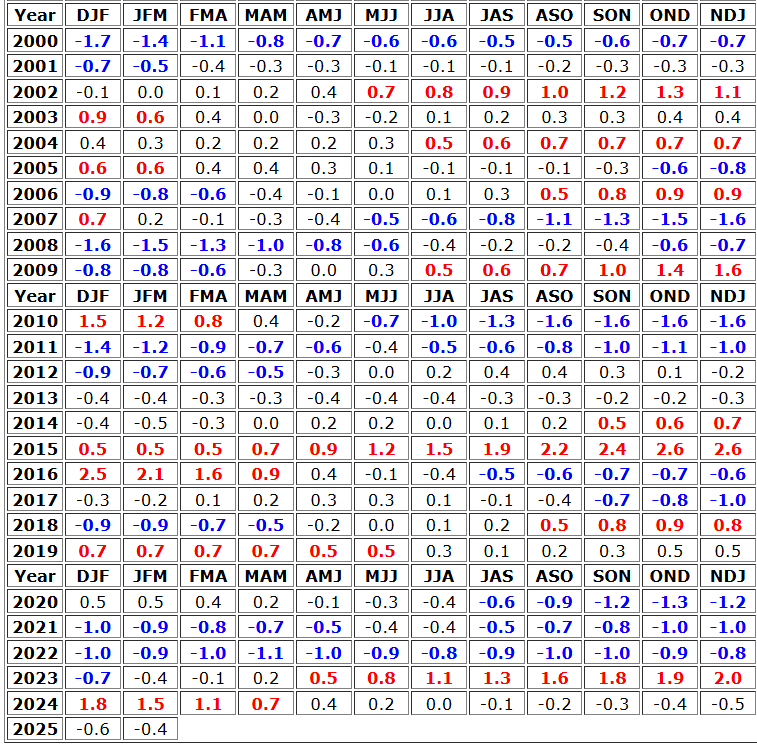
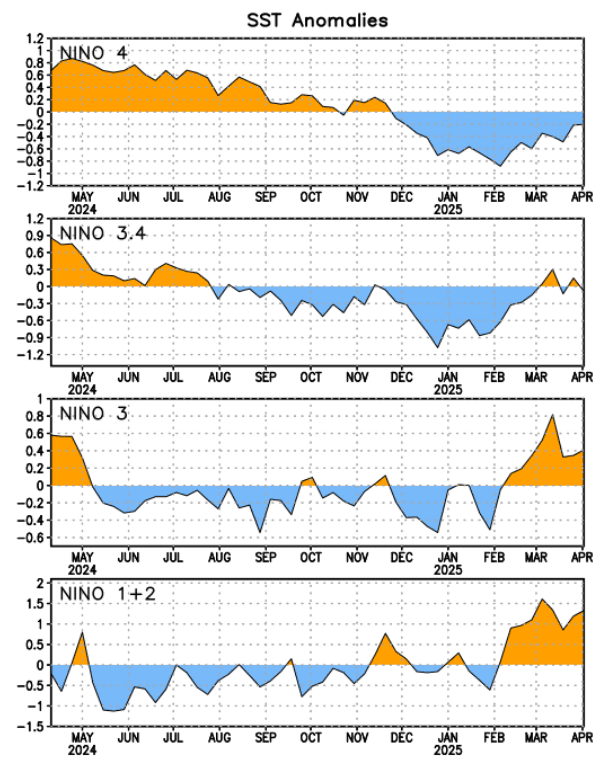
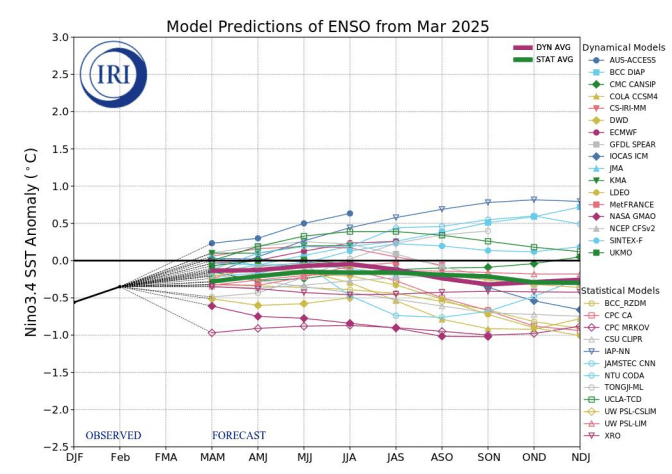
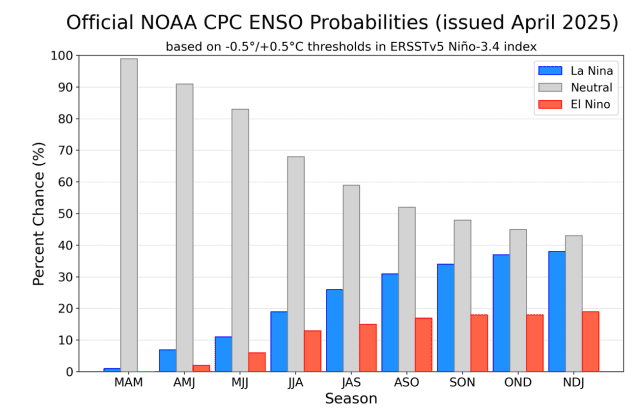
3. Negative IOD
The Indian Ocean Dipole (IOD) is defined by the difference in sea surface temperatures between the eastern and western tropical Indian Ocean.
Mostly neutral or slightly negative IOD index during Summer 2025 is expected.
IOD- correlates with La Nina and NAO-.
Expected IOD- is strongly associated with very warm and stormy SE Asia, especially Indonesia, with a high risk of floods and landslides across all region.
In India, the eastern half of the subcontinent is more stormy and the western half is drier than average, but in Summer 2025, all region is forecast to have above-average precipitation.
Japan, Koreas and China are less stormy.
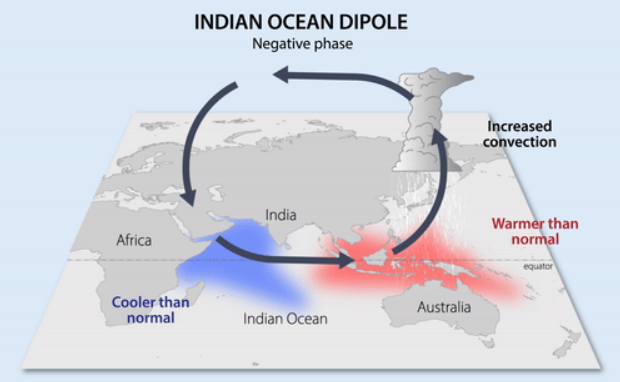
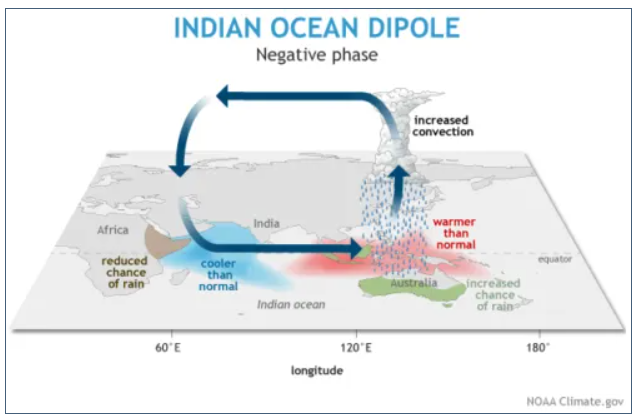
A negative phase of IOD. Sources: https://earthobservatory.sg/earth-science-education/earth-science-faqs/climate/climate-processes/indian-ocean-dipole; https://www.worldclimateservice.com/2021/09/02/indian-ocean-dipole/

Precipitation above India during IOD+ and IOD-. Source: https://link.springer.com/article/10.1007/s00703-020-00734-5
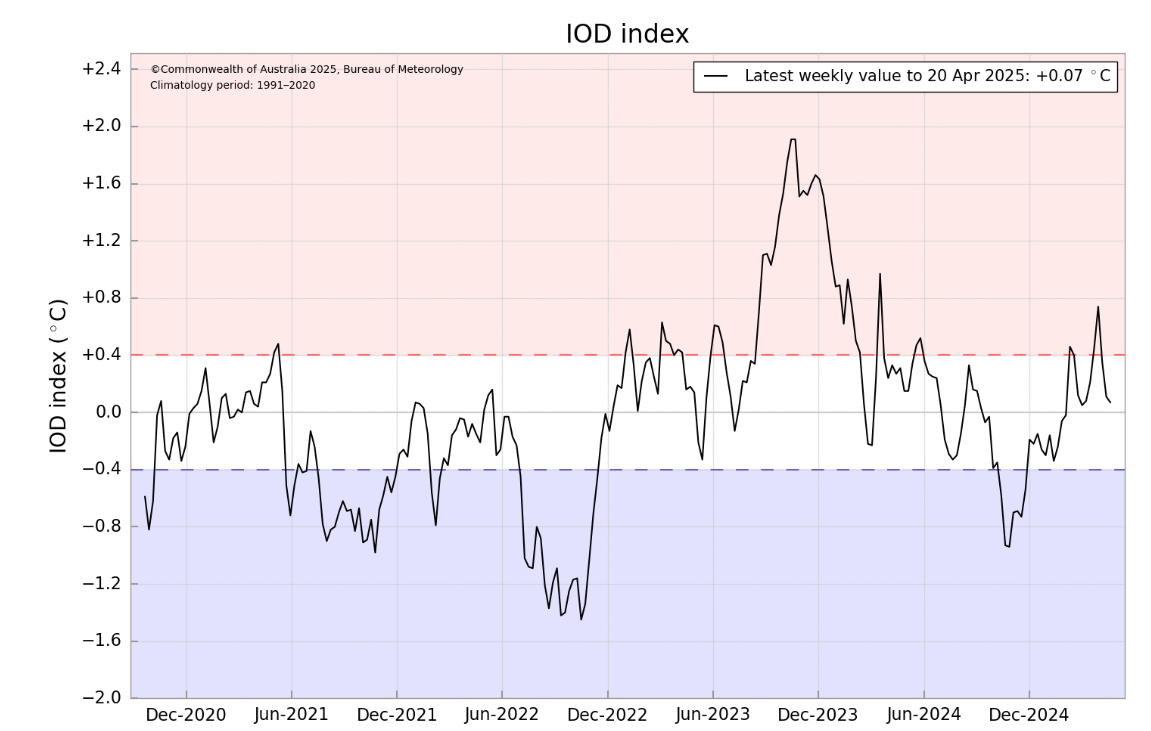
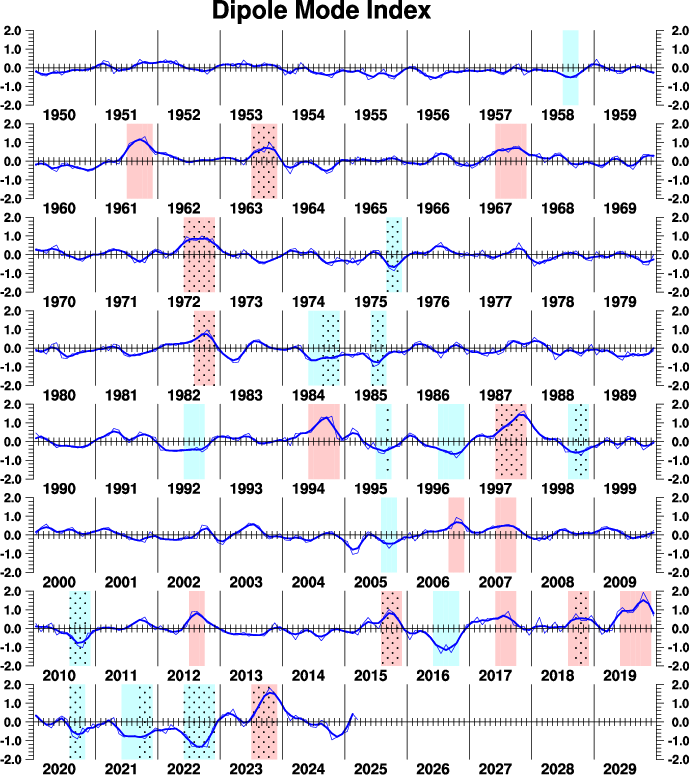
4. PDO-
La Nina in combination with IOD- and PDO- is bringing warm seas and oceans into southern, southeastern, and eastern Asian shores a resulting in stronger tropical cyclone activity.
Warmer SSTs means better conditions for formation tropical cyclones.
PDO is predicted to stay in its negative phase all year 2025. PDO- however, should be gradually weakening.
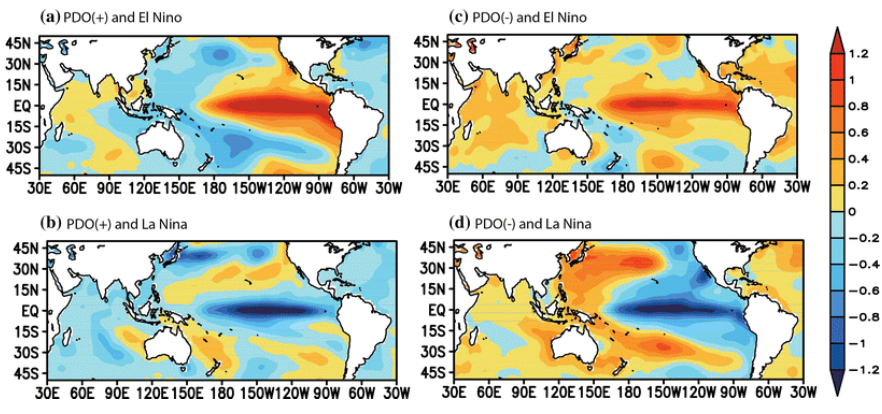
Warm SSTs during La Nina and PDO- above Asian seas. Source: https://www.researchgate.net/figure/Composites-of-SST-anomalies-during-a-the-warm-phase-of-the-PDO-and-El-Nino-years-b-the_fig3_283050507
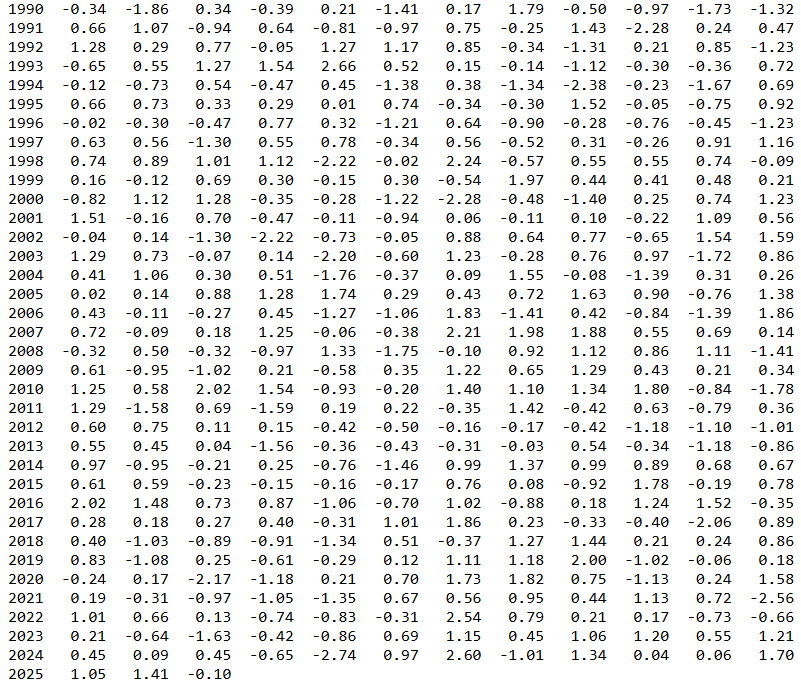
Evolution of PDO index. Source: https://www.cpc.ncep.noaa.gov/products/precip/CWlink/pna/norm.pna.monthly.b5001.current.ascii.table
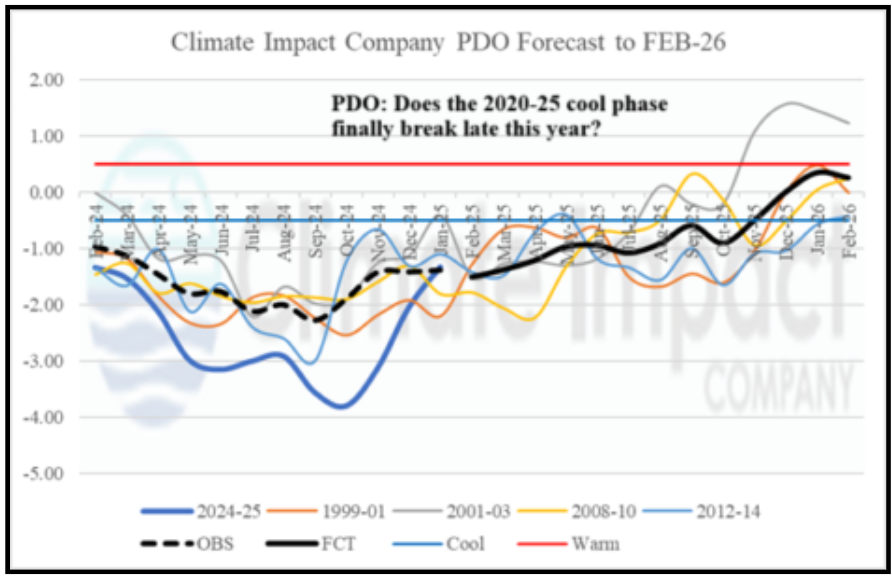
PDO forecast. Source: https://climateimpactcompany.com/february-2025-enso-pdo-amo-and-iod-outlook-2-2/
5. A melting Arctic with much escaping moisture
A declared 2025 Arctic sea ice extent winter maximum was the lowest on record, at 14.33 million km² (5.53 million mi²). That’s 80,000 km² (31,000 mi²) below the previous low seen on March 7, 2017.
La Nina means stormier Arctic than El Nino, with less high pressure anomalies, but NAO- and AO- blocking highs, despite La Nina, should in Summer 2025 still bring anomalous heatwaves far northward, even behind the Polar Circle during the following summer season, mainly above Taymyr and Verkhoyansk region.
The GW hole in the North Atlantic should have an impact on NW Asia mainly in the next decades, in the case that the Gulf Stream collapses.
Escaping moisture from the record warm Arctic Ocean as part of a mechanism so-called Arctic Amplification (a positive climate feedback) should surprise by tropical summer far north, behind the polar circle, in Summer 2025, during shirt, but intense heatwaves.
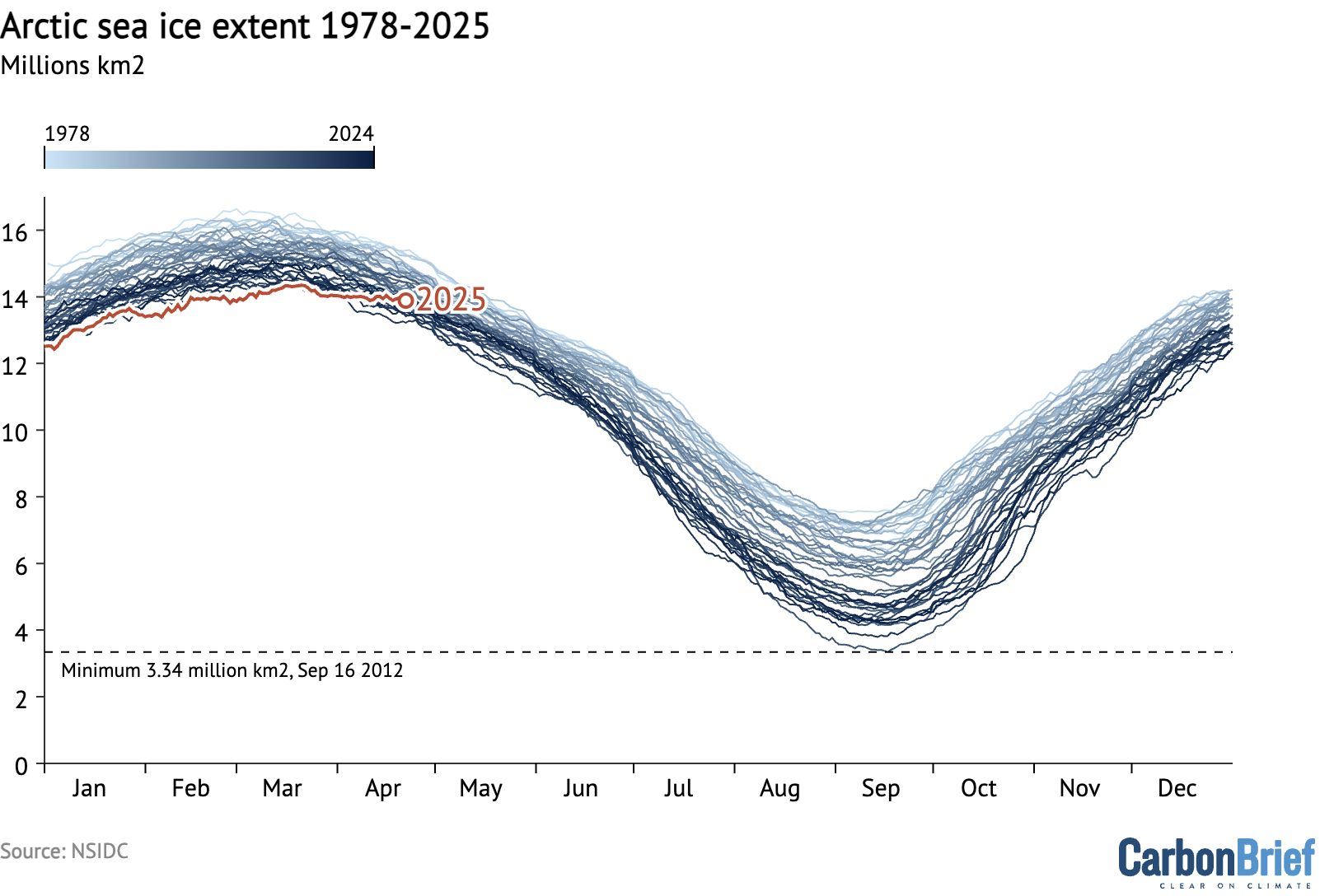

6. Mostly AO- / NAO-
Since 2006 (in the last 20 years), overall, only 6 summers finished like NAO+ and only 4 winters like NAO-. It means, that chances for NAO- summers are more than 200% higher and chances for NAO+ winter around 500% higher than NAO+ for summer and NAO- for winter. In Summer 2025, there is expected mostly more or less weaker or stronger NAO-, again, or neutral phase; NAO+ is not probable overall, so far.
During NAO- phase in Asia, strong meridional anomalies should appear linked with temperatures and precipitation, both.
AO- should bring a long-term periods of heat and drought on the one side and storms and relative cold on the other hand.
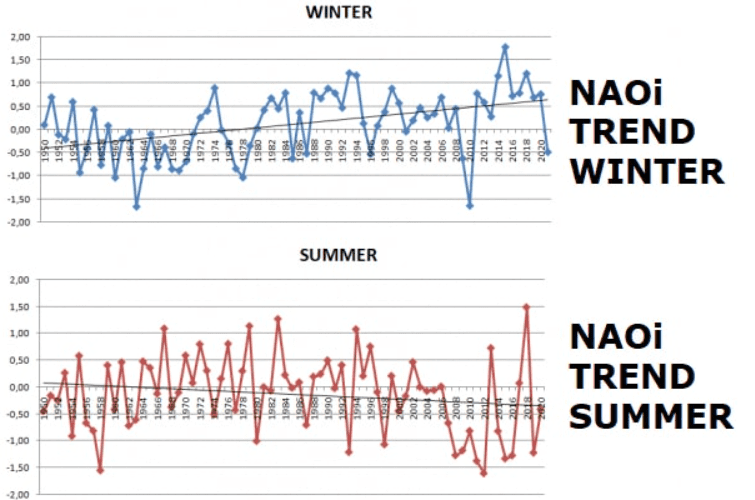
Meridional pattern above mid-latitudes should be formed by blocking pressure fields, e.g. bloking high over Western Siberia, pressure trough above Central Siberia and the next warm high pressure ridge above Eastern Siberia impacting regions much southward.
Intensity of NAO- is questionable, so far, from a slightly neutral or weak NAO- phase (the most probable) to a strong NAO- phase.
The last ECMWF outputs of NAO for Summer 2025 is mostly neutral, but the previous ones, from the previous months were mostly negative.
After the year 2000, approximately 2/3 of winters were NAO+, while 2/3 summers NAO-. NAO-, with similar (correlated) weather patterns in Asia. Slower Rossby waves with a high amplitude means a lot of heatwaves replacing by severe storms, mostly.
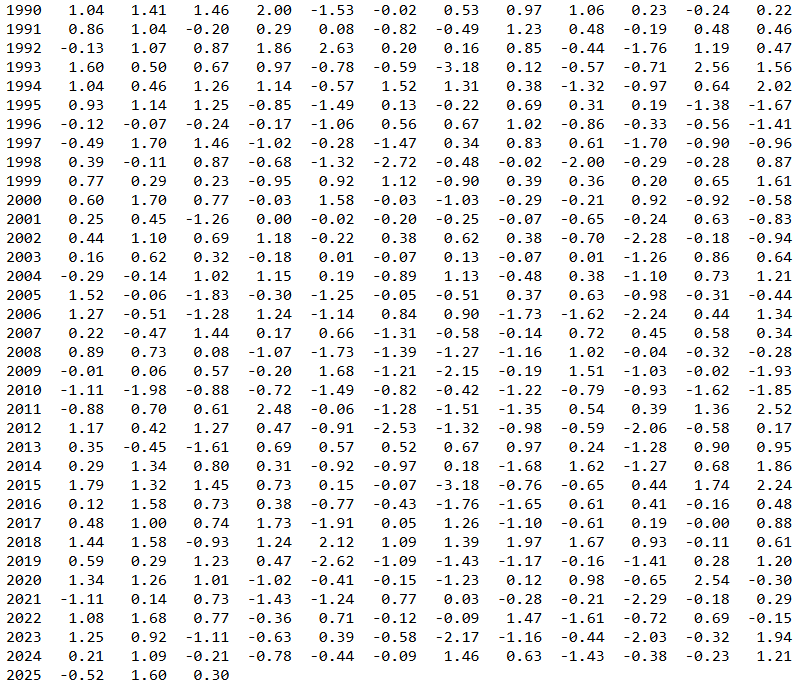
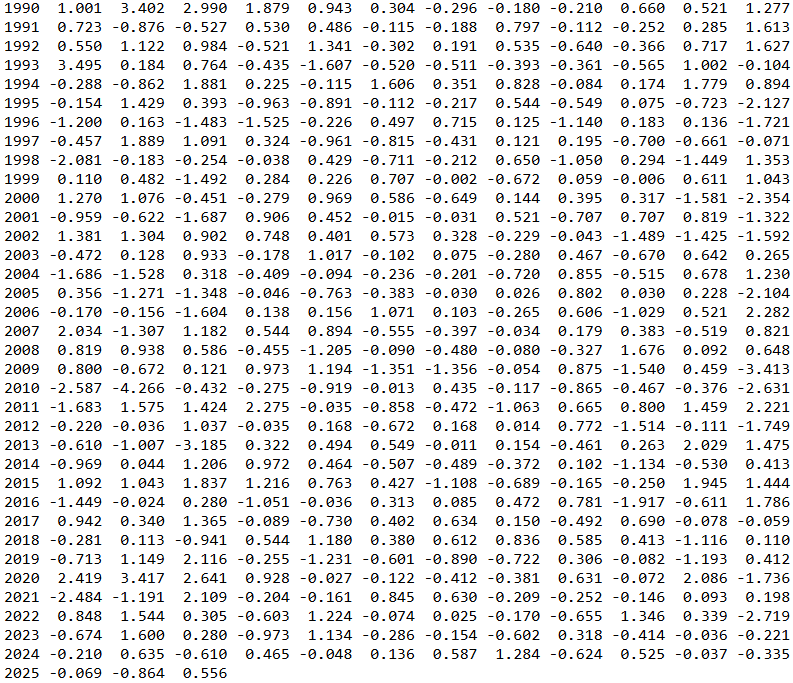
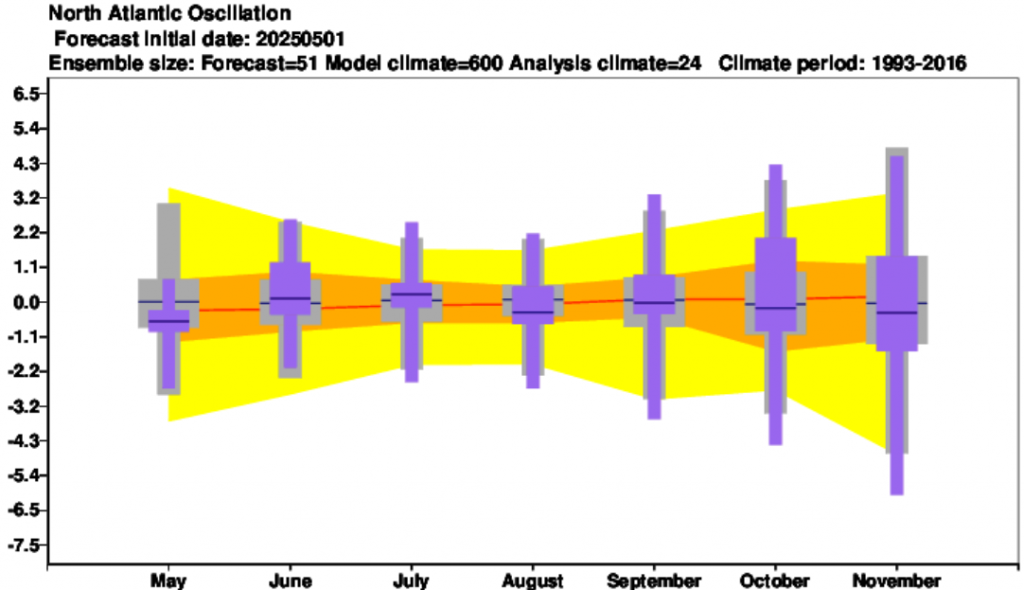
NAO forecast until October 2025 /Source: https://charts.ecmwf.int/products/seasonal_system5_climagrams_teleconnection?base_time=202504010000&index_type=NAE
7. A shift of Hadley Cell northward
The shift of the Hadley Cell northward should push summer patterns to more northern regions, as usual. The shifted stormtrack should hit the northernmost regions in this changed climate. Rossby waves, however, should produce long pressure troughs with low-latitude situated lows and extreme high-latitude heatwaves on their front sides within high-pressure ridges, during a collapsing jet-stream.
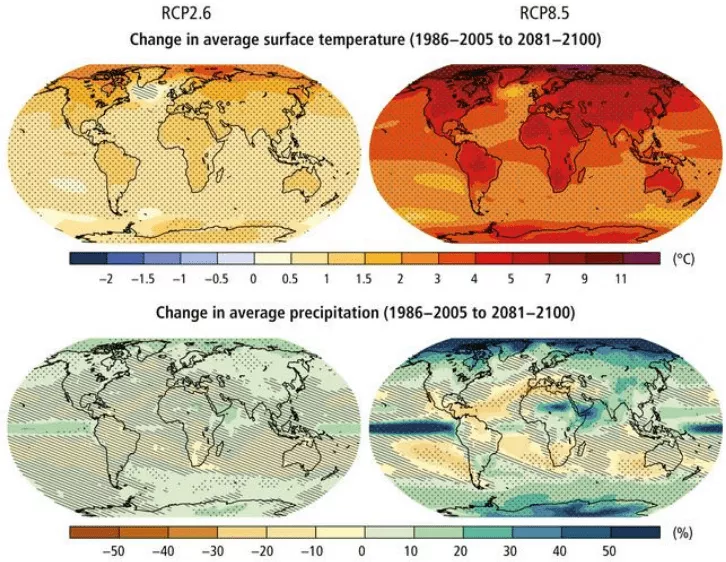
RCP8.5 (CMIP5) (IPCC, 2014). Note: precipitation changes in Europe are strongly linked with a shift of Hadley cell northward.
8. Strong (and deadly) Typhoon 2025 season
Strong typhoon season in SE Asia is associated with La Nina, IOD- and PDO- patterns.
While in SE Asia, typhoon activity is forecast to be above normal /https://www.youtube.com/watch?v=ODDCfOBxjwA/, the Chinese, Korean, and Japanese sectors should see fewer typhoons in the 2025 season /https://www.guycarp.com/content/dam/guycarp-rebrand/insights-images/2025/05/05_07_2025_Tropical_Cyclone_Predictions_2columns_publish.pdf/.
SE Asia will dispose of very warm SSTs in 2025 thanks to La Nina, IOD- and PDO-, with greater chances to the initiation of tropical activity.
Around 27 named storms, 18 typhoons and 7 super typhoons is expected.
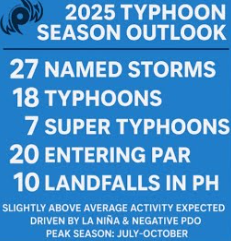
Source: https://www.youtube.com/watch?v=ODDCfOBxjwA
9. Strong (and deadly) Cyclone 2025 season
La Nina, IOD- and PDO- should mean mainly stormier eastern half of India and Bangladesh; however, in Summer 2025, the whole subcontinent will report above average rainfall.
Colder and stormy pattern should spread to southern Iran and the southernmost Middle East, with some cyclones or their remnants in Saudi Arabia, Yemen, Oman, UAE and southern Iran, possible.
Pakistan hit severe cyclones later, too.
So far, mainly the Southwest Indian Ocean, the Australian region, and the South Pacific were traditionally active from January to April 2025, but soon, from May to November, the cyclone season in the northern Indian Ocean will be peaking.

Tropical activity in the World in 2025, so far. Source: https://www.wikiwand.com/en/articles/Tropical_cyclones_in_2025
10. Strong hurricane season with an effect to Russia / W Asia
La Nina and AMO+ will bring above-average Hurricane season 2025.
For Asia, mainly NW/W parts, especially W Siberia, Central Asia, Caucasian region and the Middle East it should mean weaker remnants of ex-hurricanes in late Summer 2025, bringing as extratropical lows rainfall and changes of weather patterns.

Source: https://www.cbsnews.com/news/2025-atlantic-hurricane-season-forecast/
11. QBO Easterlies
More support for meridional airflow, including NAO- / AO- conditions in the Northern hemisphere and Asia, thanks to a slow, gradual shift from Westerly to Easterly phase is expected in 2025, with a possible small and slightly increasing contribution to atmospheric blocking and heatwaves in Asia.
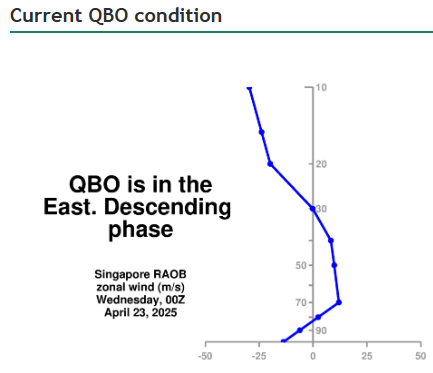
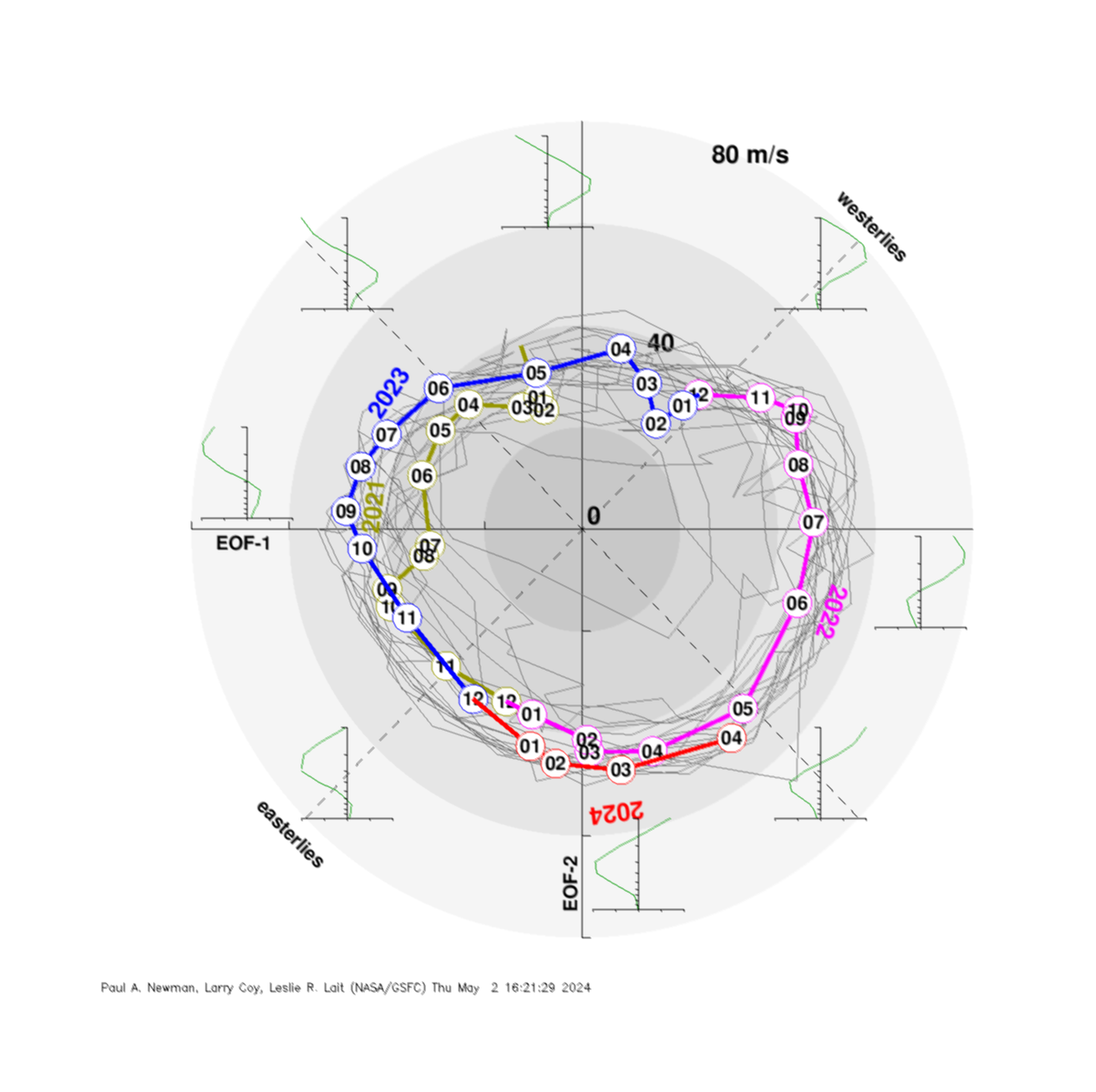
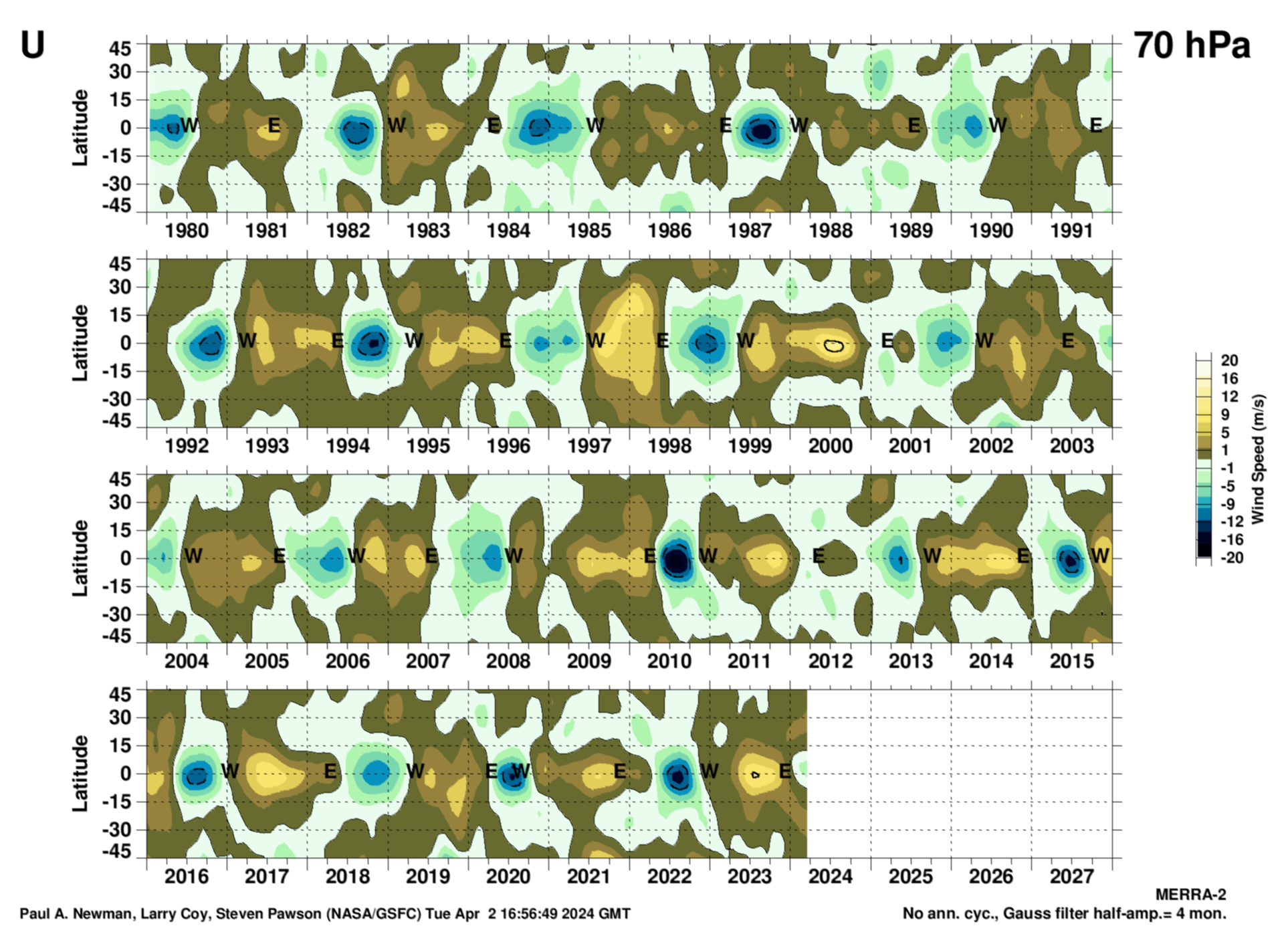
12. AMO+
Despite the forecast weakening of the AMO+ phase in Summer 2025, and regenerating in Autumn 2025, still very warm SSTs above the Atlantic should produce a very dangerous Hurricane season 2025 /https://climateimpactcompany.com/february-2025-enso-pdo-amo-and-iod-outlook-2-2//, with possible weak impacts to NW/W Asia in late summer.
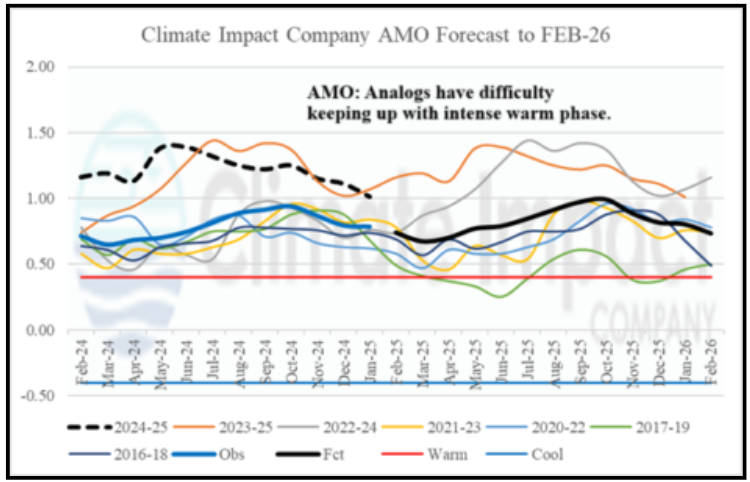
AMO outlook. Source: https://climateimpactcompany.com/february-2025-enso-pdo-amo-and-iod-outlook-2-2/
13. Warm SSTs (Sea surface temperatures)
Caused by La Nina, IOD- and PDO- mainly in SE, S and E Asian sector will be warm seas / oceans.
Colder seas should appear mainly southward (the Arabian Sea) and westward (the Red Sea) from the Middle East, thanks to IOD-, and in the eastern coast of Siberia.
Warm seas mean more precipitation, and stronger typhoons and cyclones globally, such as escaping moisture from the Arctic in the Arctic amplification mechanism, with severe T-storms on the North.
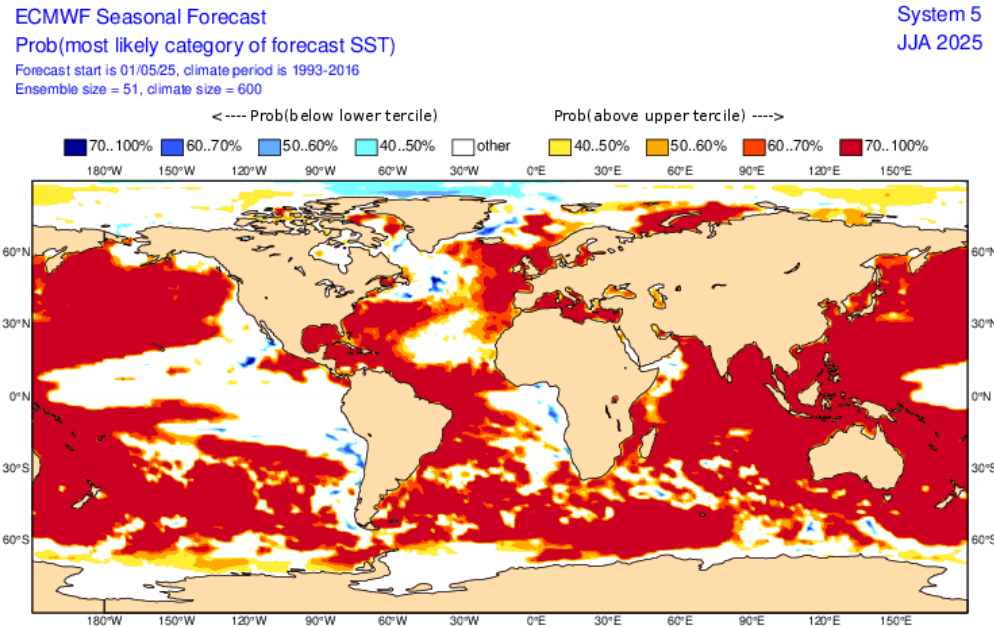
SSTs predicted in Summer 2025. Source: https://charts.ecmwf.int/products/seasonal_system5_standard_ssto?area=GLOB&base_time=202505010000&stats=tsum&valid_time=202506010000
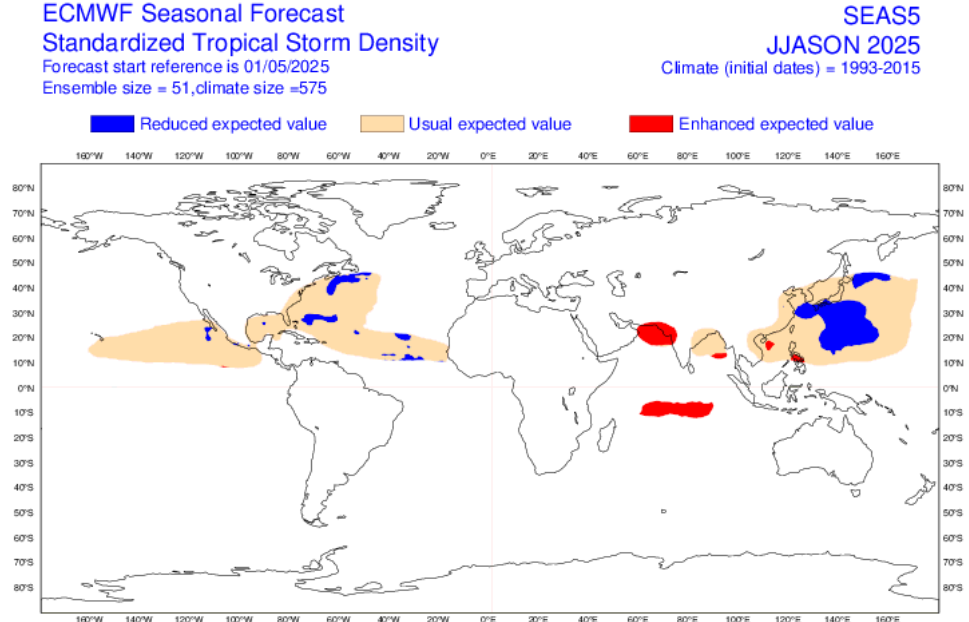
May 2025 forecast od tropical activity for the next half-year. Source: https://charts.ecmwf.int/products/seasonal_system5_tstorm_density_standard?base_time=202505010000
14. PNA-
The PNA pattern is associated with strong fluctuations in the strength and location of the East Asian jet stream.
The negative phase is according to NOAA associated with a westward retraction of that jet stream toward eastern Asia, blocking activity over the high latitudes of the North Pacific, and a strong split-flow configuration over the central North Pacific /https://www.cpc.ncep.noaa.gov/data/teledoc/pna.shtml/.
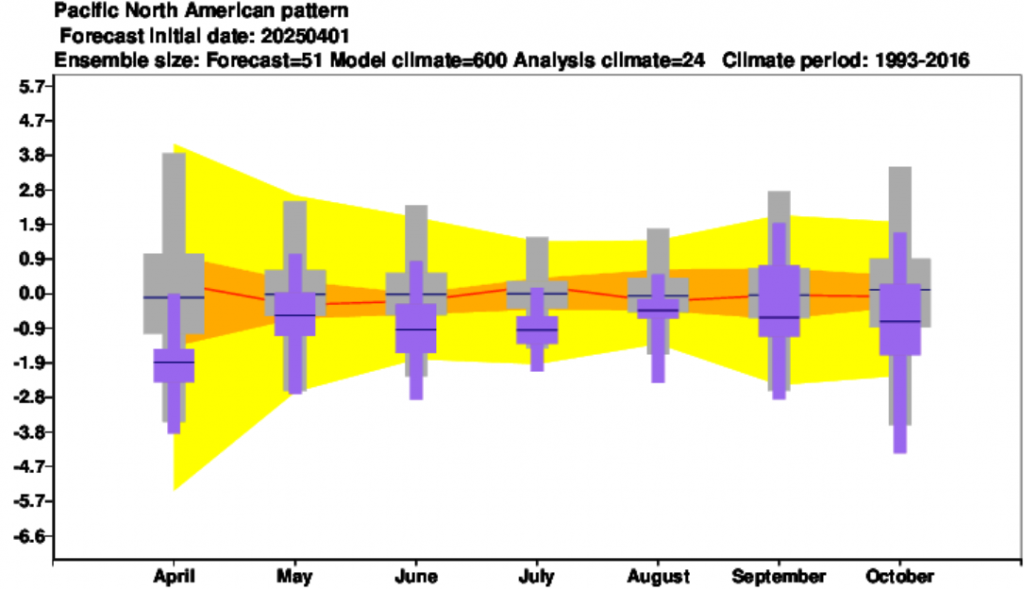
PNA forecast. Source :https://charts.ecmwf.int/products/seasonal_system5_climagrams_teleconnection?base_time=202504010000&index_type=Pacific%20N.Amer%20pattern
15. Extremely hot Sahara
In the last year often anomalously hot Western Sahara, but hot Egypt, too were creating incredible sources of hot air for the Middle East and Central Asia.
In Summer 2025 this pattern, especially after historic heatwaves in the Middle East and Central Asia in April and May 2025, will be strengthened, with path of heatwaves with NEE direction, from Sahara to the northern Middle East and south Central Asia, and then, Mongolia, southern Siberia, Tibet and continental parts of China.

ECMWF JJA temperature forecast with emphasis to Sahara, the Middle East and Central Asia. Source: https://charts.ecmwf.int/products/seasonal_system5_standard_2mtm?area=GLOB&base_time=202504010000&stats=tsum&valid_time=202506020000
16. Historic heatwaves in Central Asia
Already in April 2025 appeared historic heatwaves across the Middle East and Central Asia.
From monthly and other records it were Pakistan with +49,0°C, Kuwait with +48,9°C, Saudi Arabia with +47,6°C, Iran/Iraq with +47,0°C, UAE with +46,6°C, Israel with +44,9°C, or Turkmenistan with +43,3°C. +40,0°C was measured in April 2025 in Uzbekistan, +39,0°C in Kazakhstan, +37,0°C in Tajikistan, and +36,1°C in Kyrgyzstan.
Historic heatwaves are continuing in May 2025 and are forecast to spread mainly in the northern Middle East and southern Central Asia, such as parts of south-Central Siberia, Mongolia and W China in Summer 2025.
17. Wildfire season
Already in early May 2025, 87% of the Zabaikalski region is engulfed by smoke from wildfires.
Another hot summer – in Western Siberia dry, in Central Siberia hot and stormy and in Eastern Siberia mainly stormy, should be linked with the next devastating wildfire season, of course, metropolitan cities in European Russia should see severe wildfires from taiga, too.
18. Atmospheric blocking – A blocking high above European Russia and W Siberia
A strong blocking high is from outputs for Summer 2025 evident for European Russia, Eastern Europe, the Black Sea region, E Scandinavia and Western Siberia as a northern Caspian Sea region.
On the back side of this system, extreme heatwaves are predicted for the eastern half of Europe /https://mkweather.com/summer-2025-forecast-for-europe//, while Western Siberia on its front side should be relatively colder, but very dry, similarly, with taiga wildfires and low water levels of rivers.
19. Volcanoes
Volcanoes across “The Ring of Fire” should have a local to regional effect on temperature or cloudiness in SE/E Asia in Summer 2025, in case of stronger eruptions, with higher VEI.
In the case of surprisingly strong eruptions, global temperature fluctuations should appear, but the probability of these events is very low. It should cause cooling in warm and stormy SE Asia.
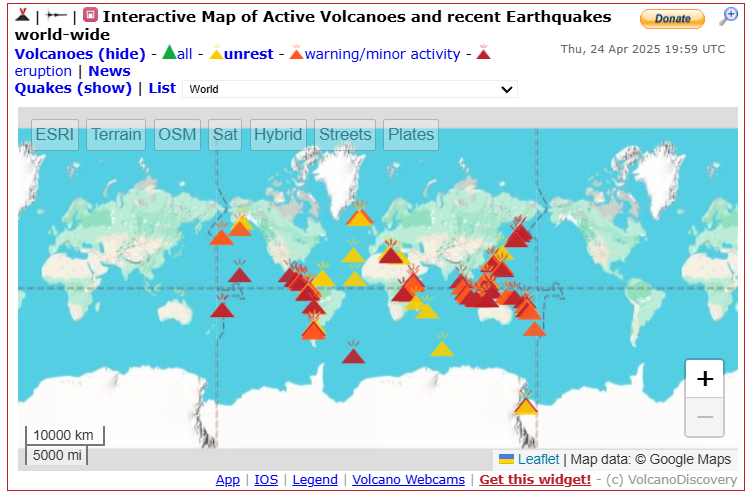
Now, we should look at the 6 main sectors on the forecast map for Summer 2025 for Asia, with similar regimes of weather:
HOT AND STORMY (MANY PARTS OF SE ASIA, CENTRAL MIDDLE EAST, WESTERN CHINA, PARTS OF MONGOLIA, SOUTH-CENTRAL SIBERIA, KOREAS AND JAPAN, S/W TURKEY – VIOLET) – In monsoon regions, a powerful start of the Typhoon and Cyclone 2025 season, high heat index and real-feel temperatures and floods / landslides. On the North, severe heatwaves with impressive storms with gusty winds, hail, damaging lightning, and flash floods. In regions hit by typhoons and super typhoons, severe winds and damage. Absolute temperature Tmaxes range from +36°C behind the Polar circle to +54°C in the Persian Gulf region. La Nina, IOD- and PDO- patterns favorable for a stronger Typhoon and Cyclone season, warm SSTs almost in all Asia increases the storm activity in many regions. An Arctic amplification is strengthening storm activity on Siberia and northern latitudes of other countries.
VERY STORMY, BUT NOT SO HOT (TEMPERATURE NEUTRAL OR SLIGHTLY ABOVE AVERAGE) (PARTS OF INDIA, BANGLADESH, PAKISTAN, NORTHERN CHINA, TONKIN BAY, EAST OMAN, YEMEN, WEST SAUDI ARABIA, PARTS OF CENTRAL AND EASTERN SIBERIA – DARK GREEN) – In monsoon regions strong typhoon or cyclone season, in deserts above average storm activity, on the North severe storms with its manifestations and mostly slightly above temperature average. There are regions with relatively colder, but still with temperature above average or neutral Summer 2025,and with precipitation above average. In Indian Ocean stronger cyclonic activity, including India, Bangladesh, Pakistan, southern Iran, parts of Oman, UAE, Yemen and Saudi Arabia. In monsoon regions possible floods, landslides and severe winds during cyclones. Above deserts possible hail or flash floods. Beijing region with mid-latutidinal storms with all its manifestations – heavy rainfall, damaging lightning, gusty winds or hail, similarly across Siberia, where will be escaping moisture from the melting Arctic. AO- in mid-latitudes will cause dramatic changes in weather patterns from hot / dry to colder / stormy. La Nina, IOD-, PDO- are associated with highest SSTs and storm activity in many regions, hovewer, Arabian Sea should be colder. Absolute maximum temperatures of the summer from +32°C in Eastern Siberia to +54°C in Pakistan.
VERY STORMY AND COLD WITH A POWERFUL CYCLONE SEASON (NROTHERN INDIA – DARKER BLUE): Above-average precipitation pattern and cold anomaly during Summer 2025, probably caused by stronger Cylclone 2025 season. Possible floods, landslides gradually, after the hot end of the period of drought in late Spring 2025. Severe storms. Maximum temperatures will drop from +50°C in early summer to +35/+40°C in peaks in late summer.
DRY – MOSTLY DRY ON THE FRONT SIDE OF A BLOCKING HIGH, STORM ACTIVITY IN NORMAL (WESTERN SIBERIA – YELLOW): Above European Russia and Western Siberia, a blocking high will be bringing heatwaves and drought on its back side, mostly in Eastern Europe, the Baltic region, and Finland, as well as Black Sea region, while on its front side will be flowing colder, but still very dry air to westernmost parts of Asian Siberia and northern Kazakhstan. Should be linked with the next devastating wildfire season, of course, metropolitan cities in European Russia should see severe wildfires from the taiga, too. Drought and low water levels of rivers, problems with water supplies. Absolute maximum temperatures +35/+40°C, in northern Kazakhstan up to +44°C.
MOSTLY WARM, BUT NEUTRAL PRECIPITATION (LITTLE REGIONS IN SOUTHERNMOST INDIA, SRI LANKA, WESTERN PHILIPPINES, AND NORTH KOREA): Mostly warm/hot, but with neutral or not known precipitation signal.
HOT AND DRY (THE NORTHERN MIDDLE EAST, SOUTHERN CENTRAL ASIA, SOUTHERNMOST CENTRAL SIBERIA, PARTS OF MONGOLIA, WESTERN CHINA, SOUTHEASTERN CHINA, JAVA, THE COAST OF MYANMAR, N / E TURKEY AND CAUCASIAN REGION – DARK RED) – Severe heatwaves and drought, irrigation needed, lack of water supplies regionally, low water levels of rivers. Hot air from the Sahara will be often shifting above the Northern Middle East, the Caucasian region, Turkey, Central Asia, Mongolia, Tibet, and the Baikal region, Siberia. The next historic heatwaves and exhausting drought are possible after April´s +48,9°C in Kuwait and +43,3°C in Turkmenistan, and up to +40°C in Kazakhstan, with mid-spring temperatures 10°C above all-time monthly temperature records. Possible historic heatwaves +45/+55°C.
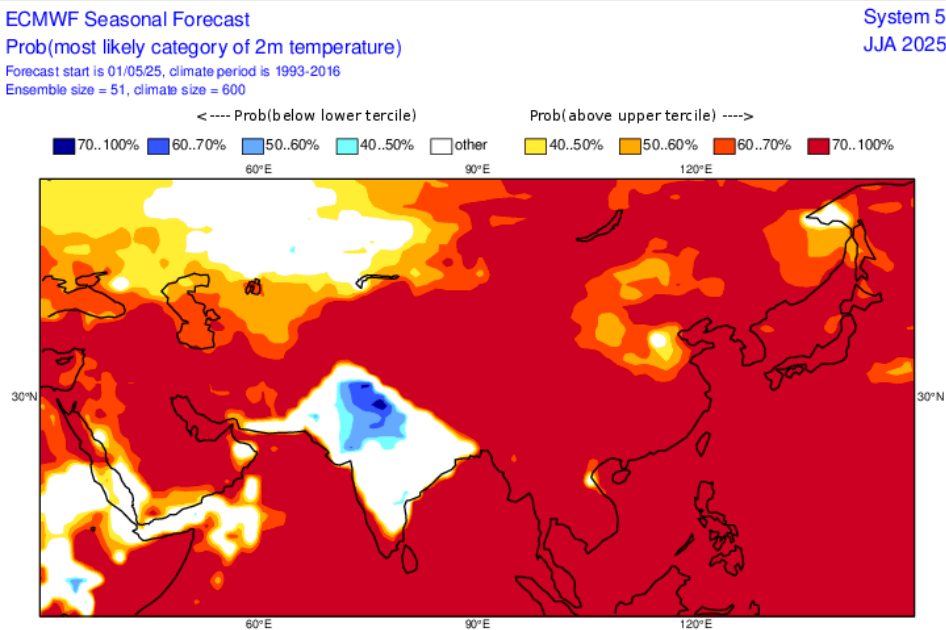
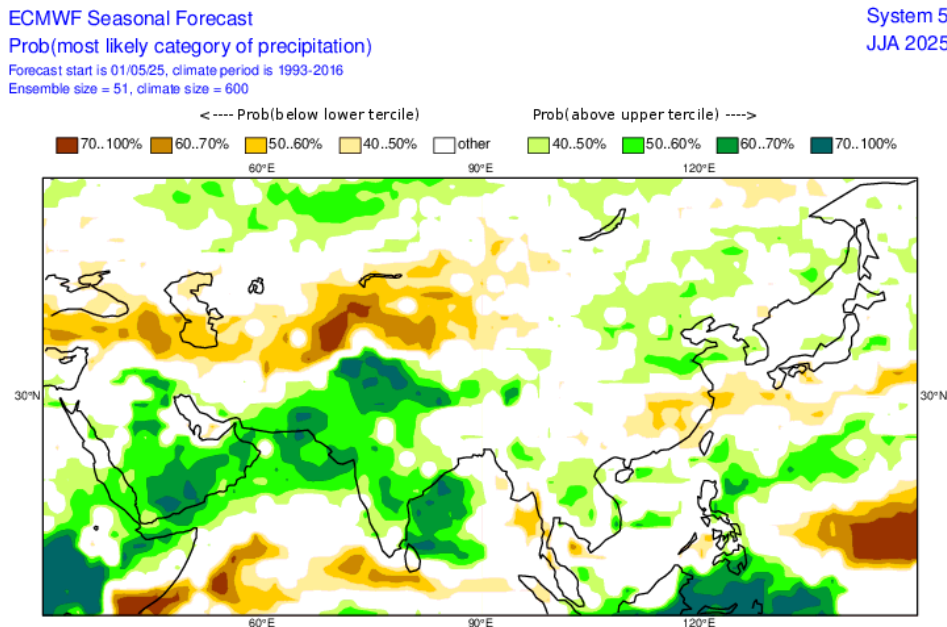
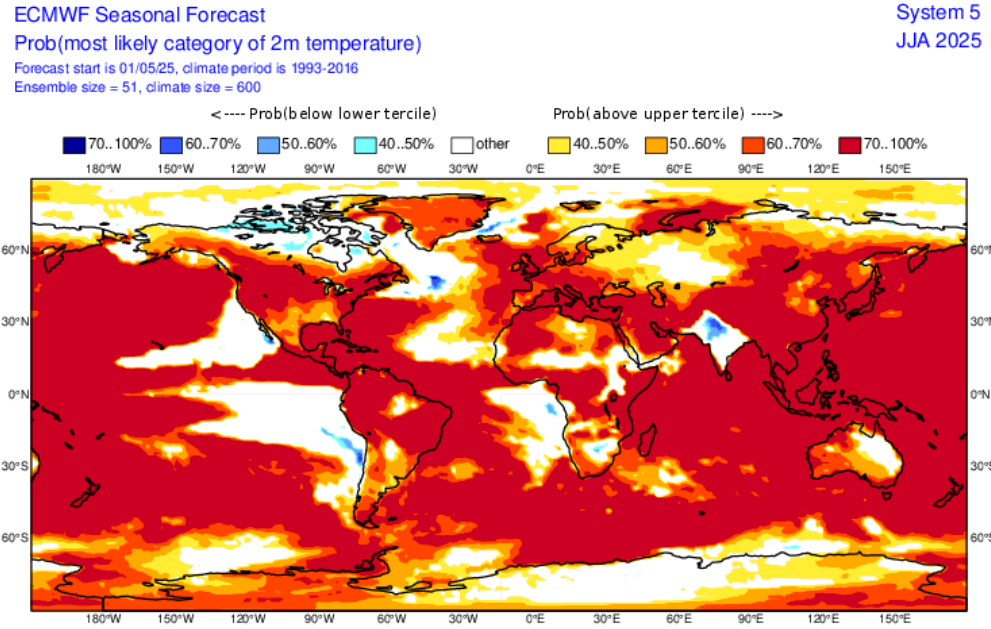
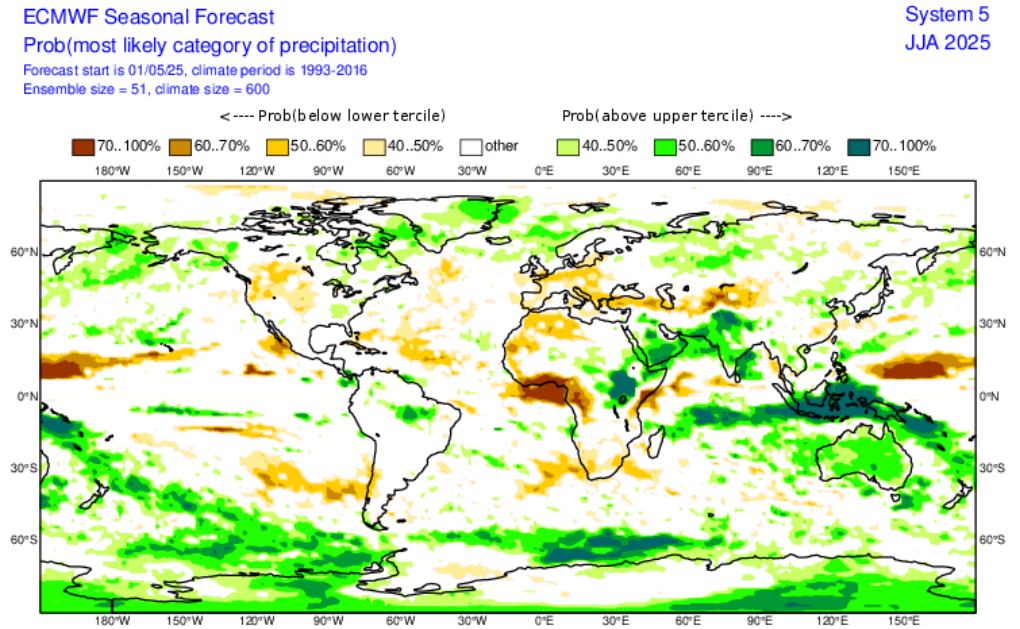
Temperature and precipitation outlook for Summer 2025 in Asia from ECMWF. Source: https://charts.ecmwf.int/
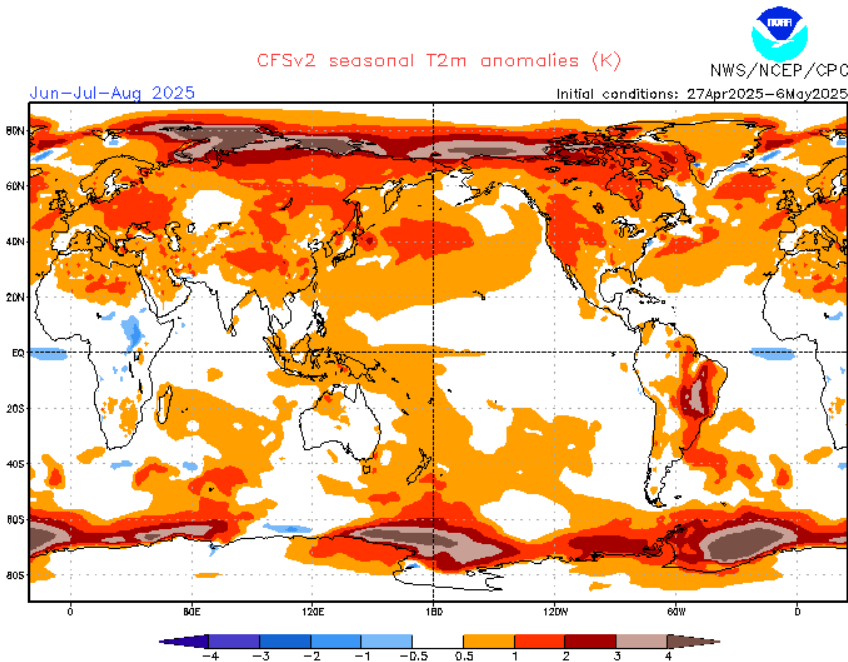
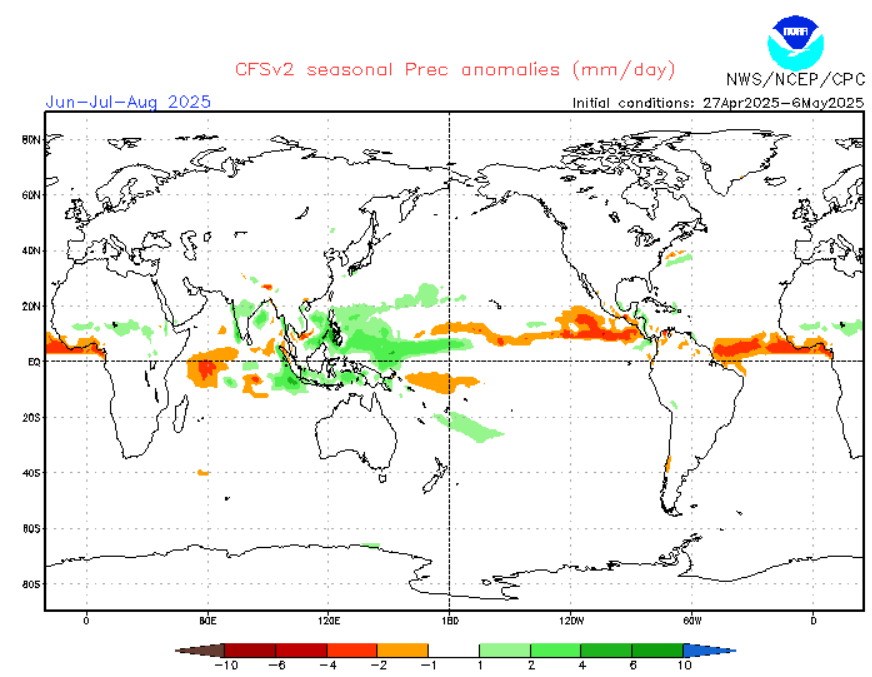
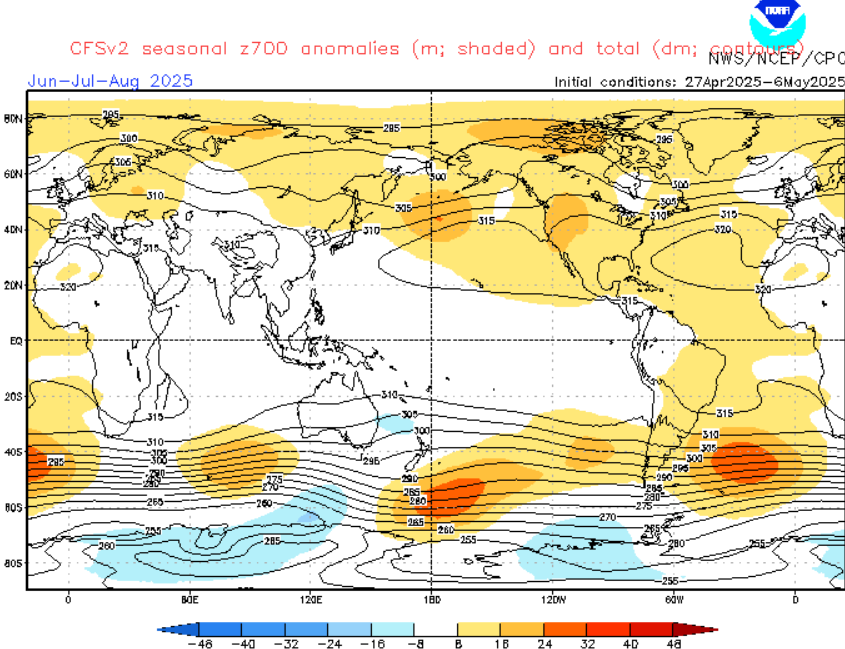
CFS forecast for Summer 2025. Source: https://www.cpc.ncep.noaa.gov/products/CFSv2/CFSv2_body.html
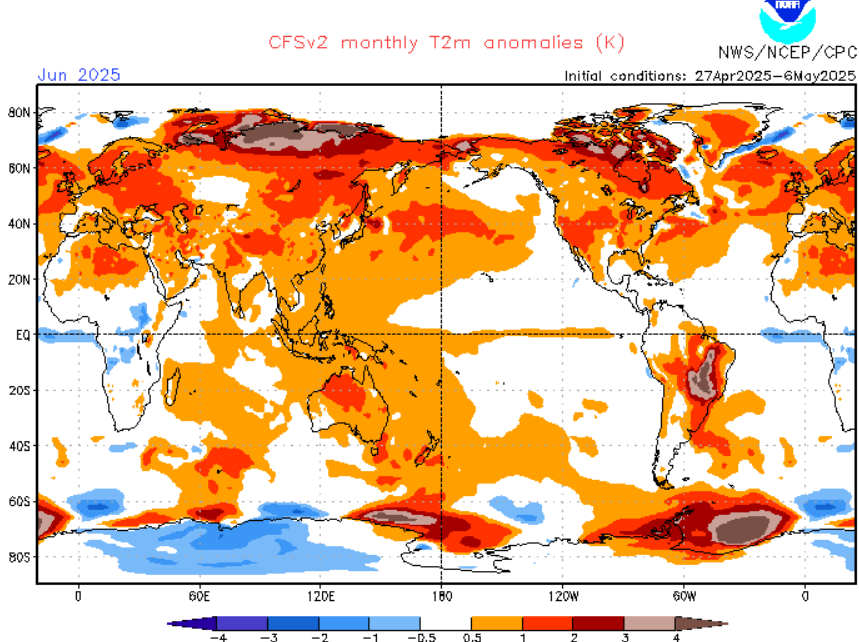
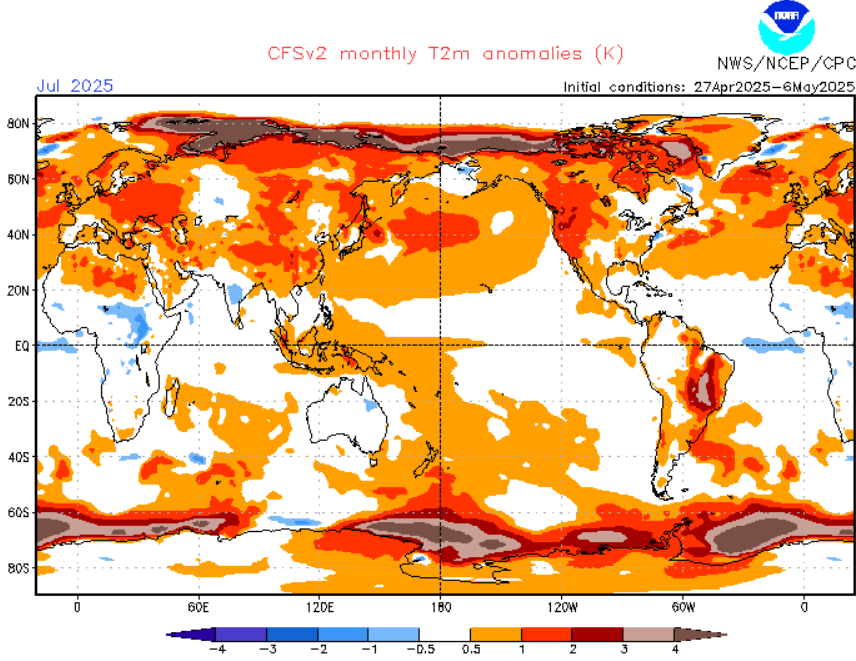
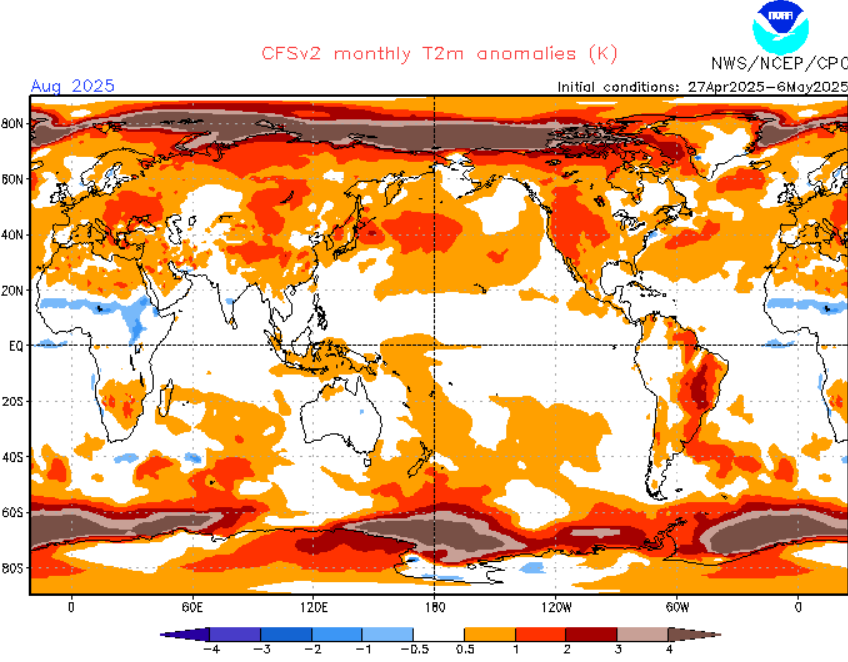
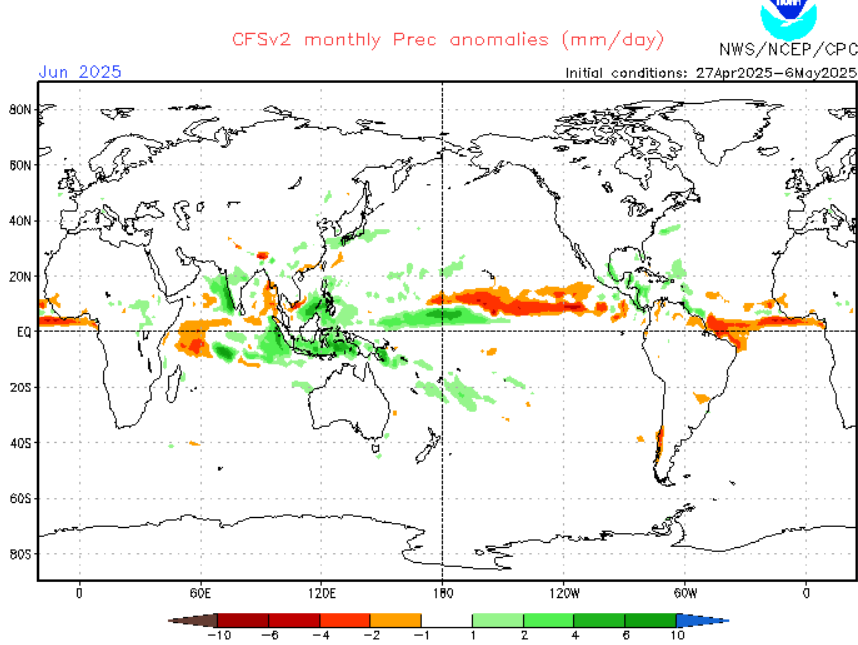
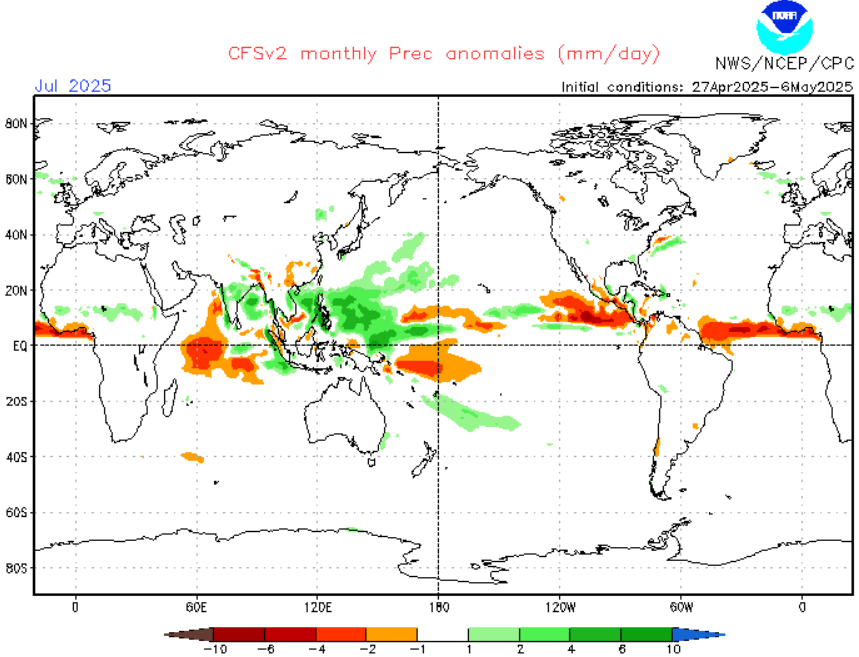
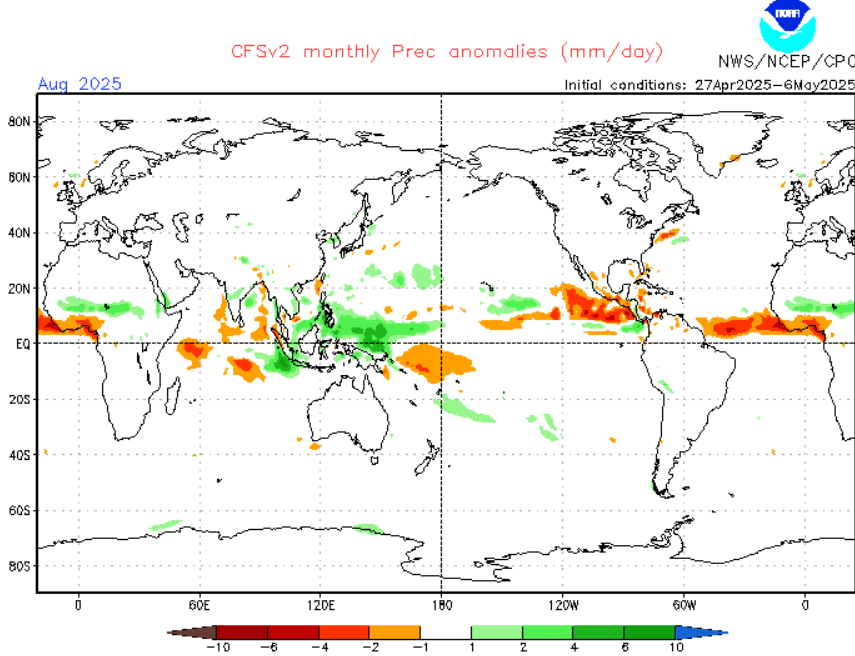
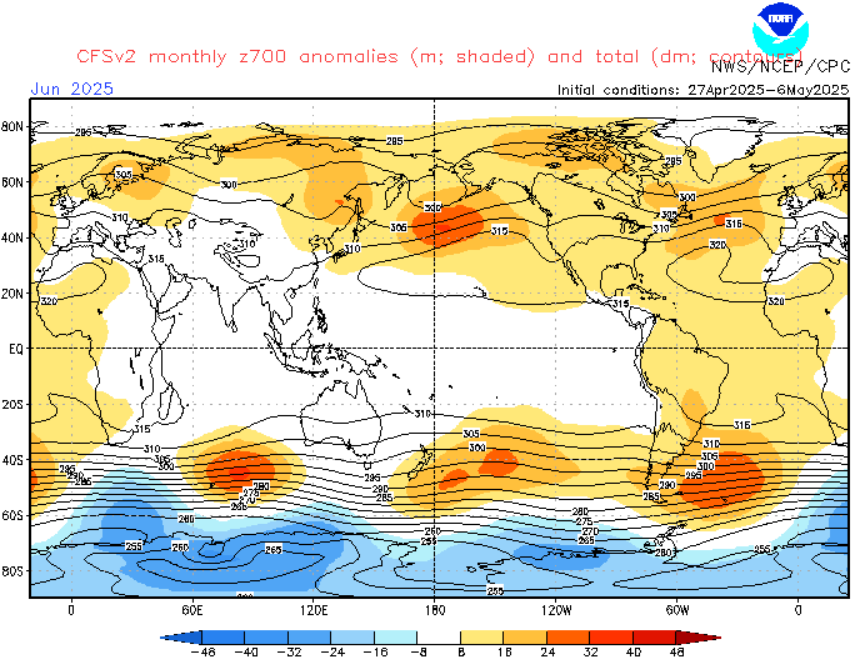
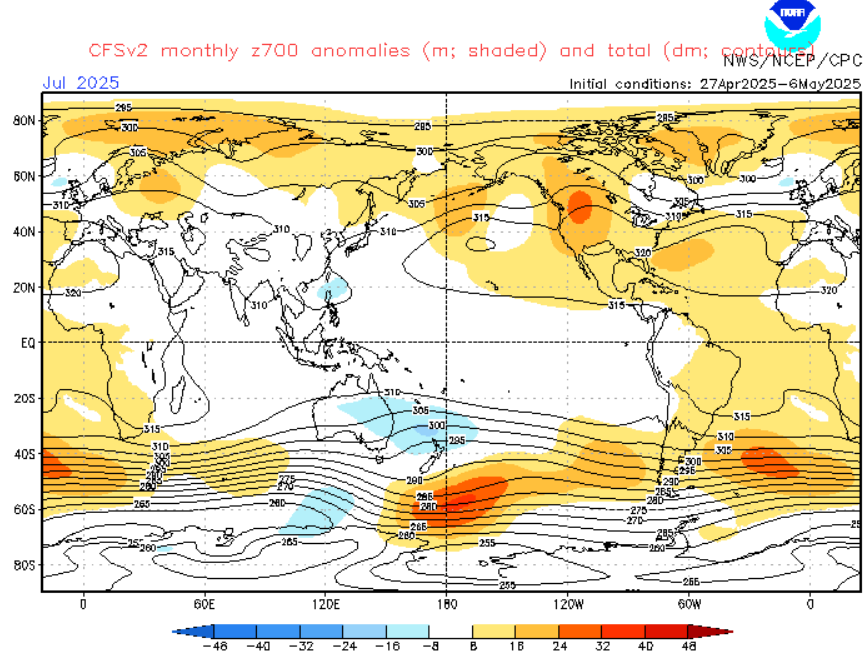

CFS forecast for Summer 2025 per months. Source: https://www.cpc.ncep.noaa.gov/products/CFSv2/CFSv2_body.html
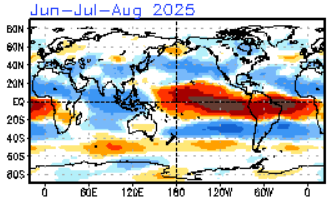

Summer 2025 u200 – u850 in m/s. Source. https://www.cpc.ncep.noaa.gov/products/CFSv2/images3/glbudifSea.gif

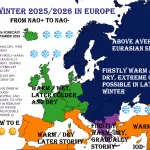
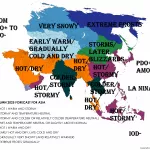


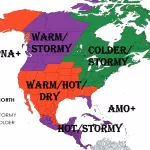
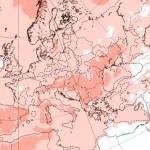
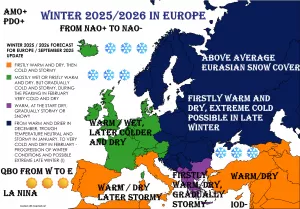
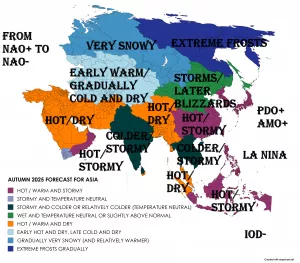

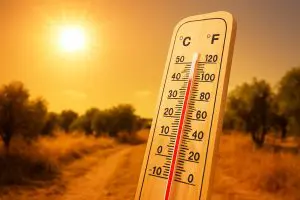
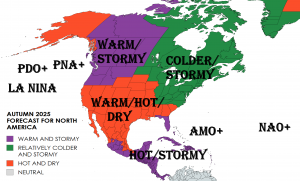
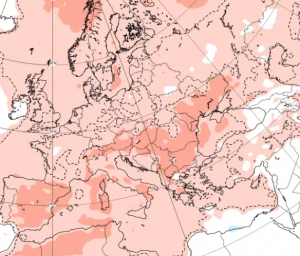
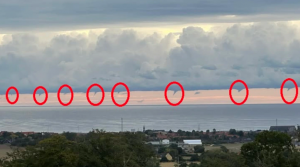
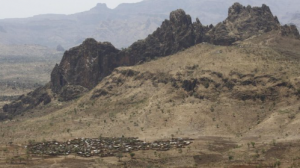




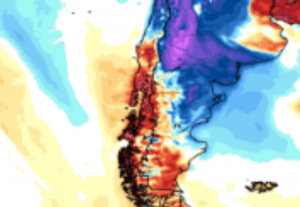

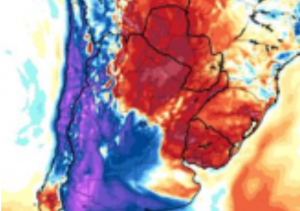
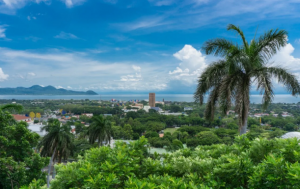




15 thoughts on “SUMMER 2025 FORECAST FOR ASIA: A STRONG TYPHOON AND CYCLONE SEASON, RECORD HEATWAVES FOR CENTRAL ASIA, HOT MIDDLE EAST (STORMY IN THE SOUTH), HOT CHINA (NORTH STORMY, SOUTH DRIER), DRY WEST AND STORMY EAST SIBERIA”